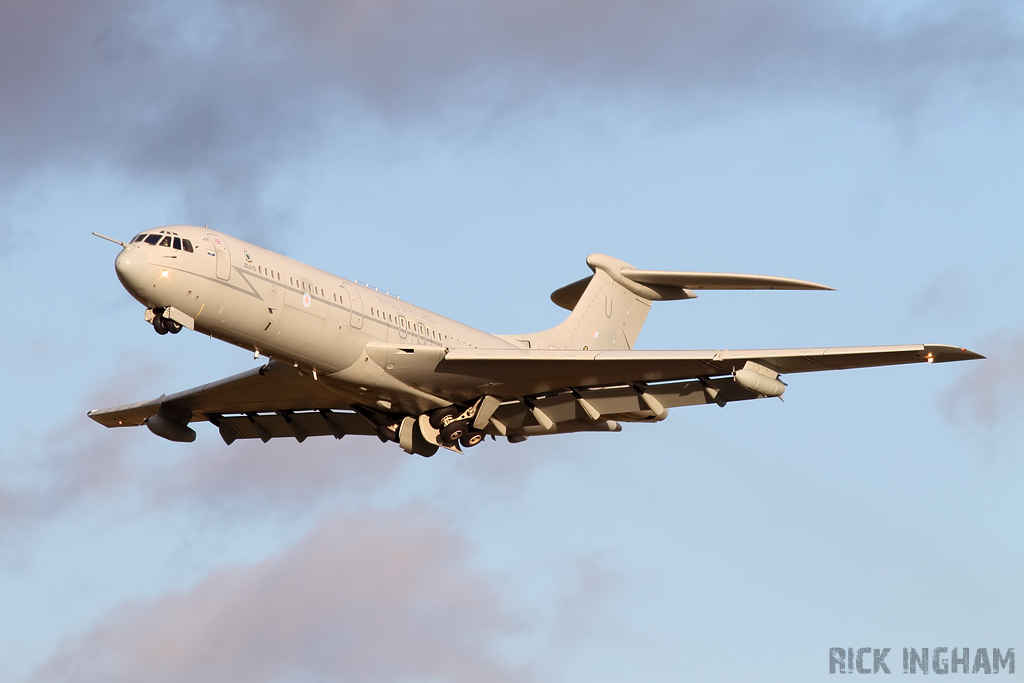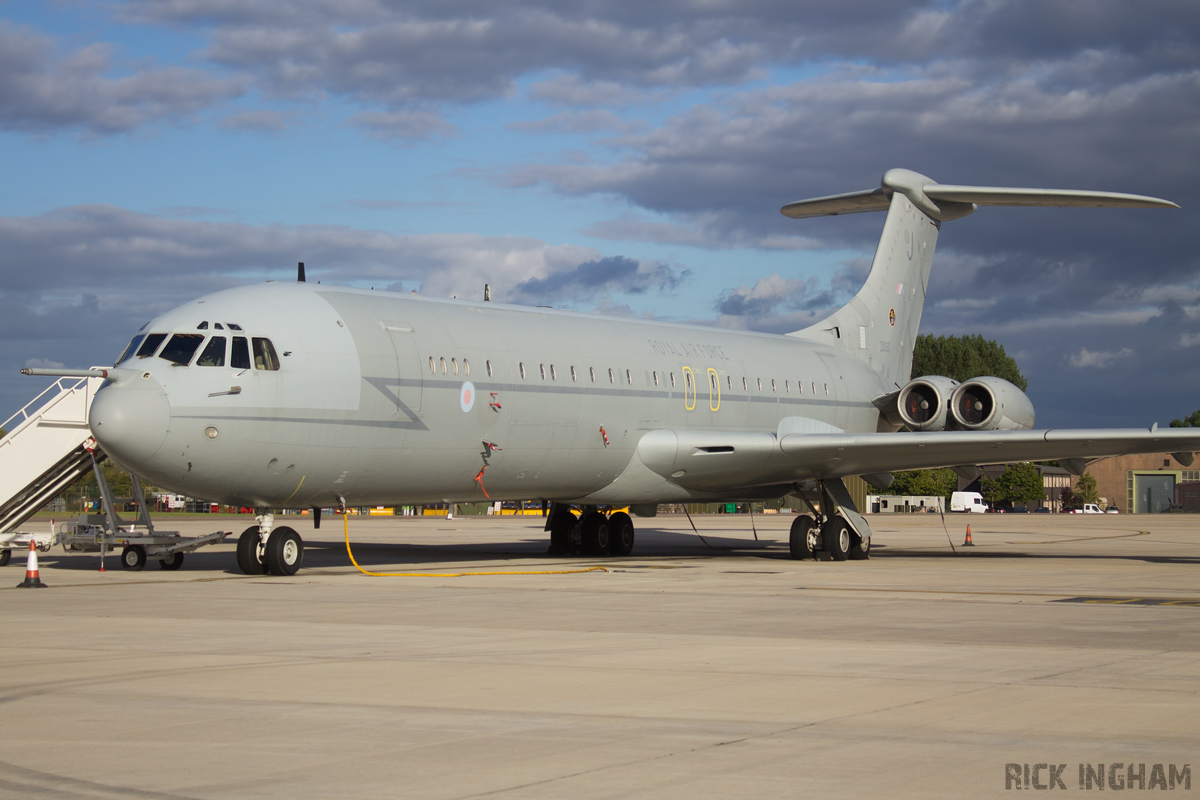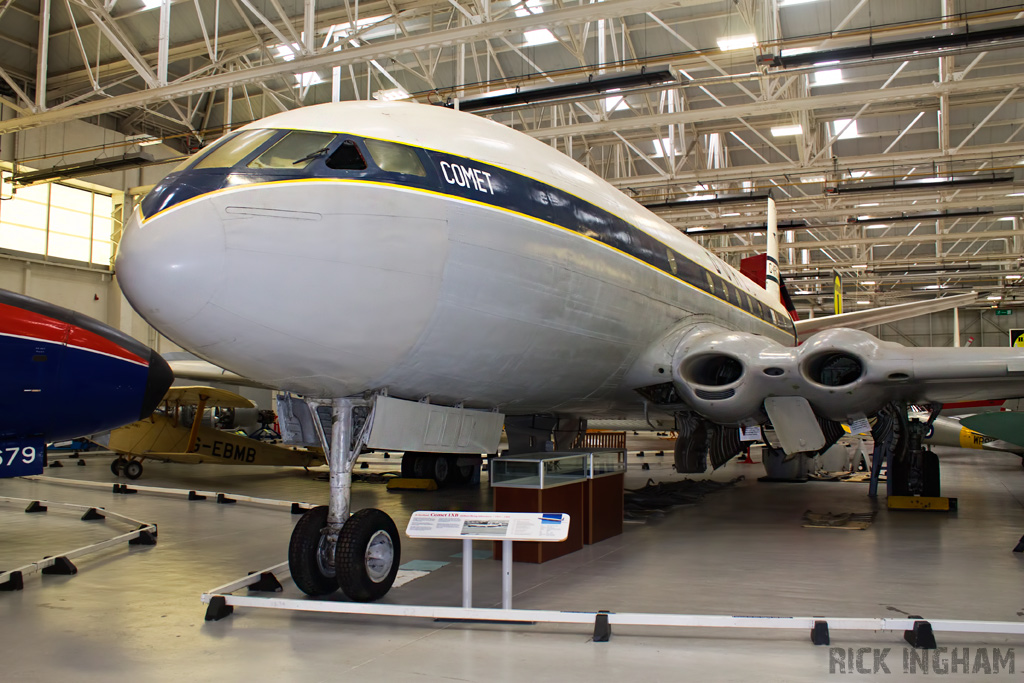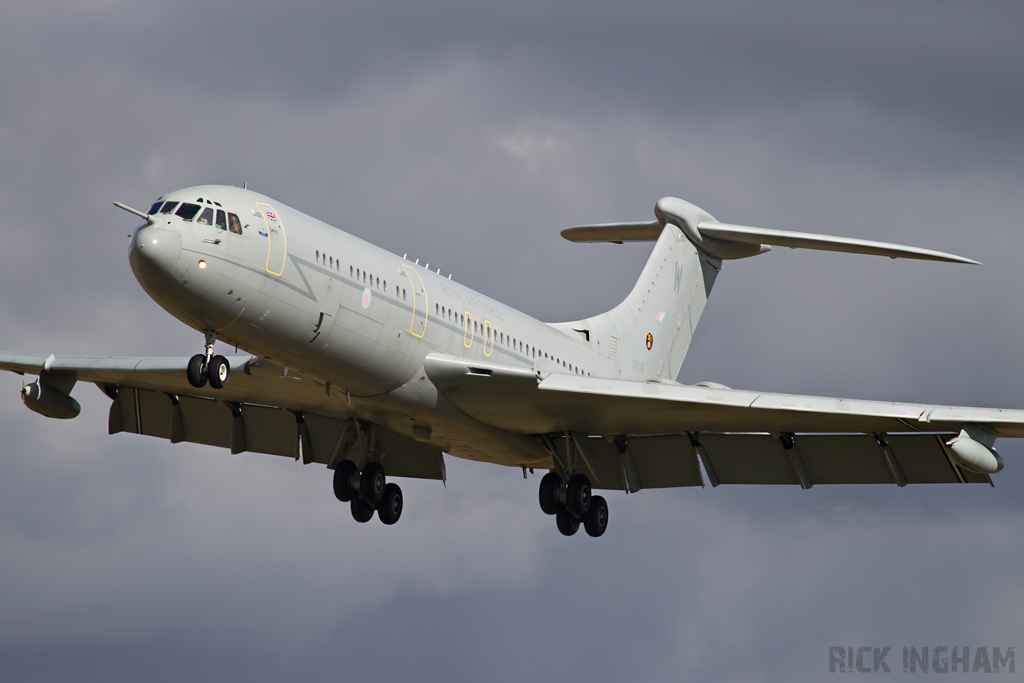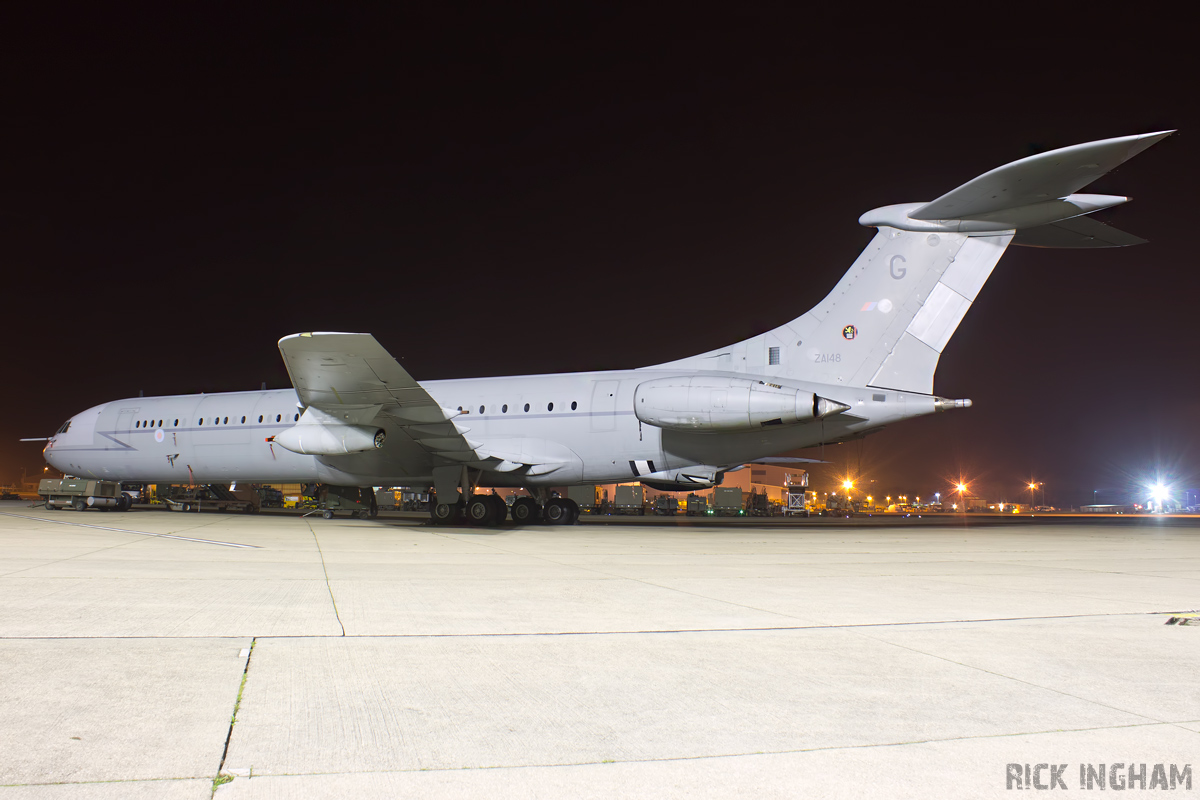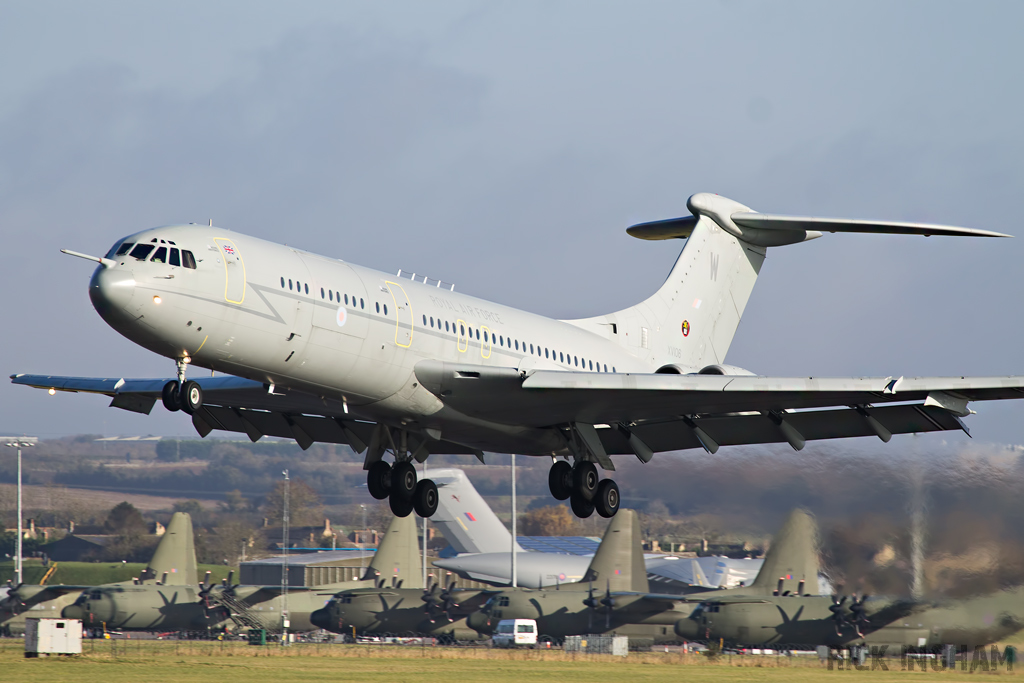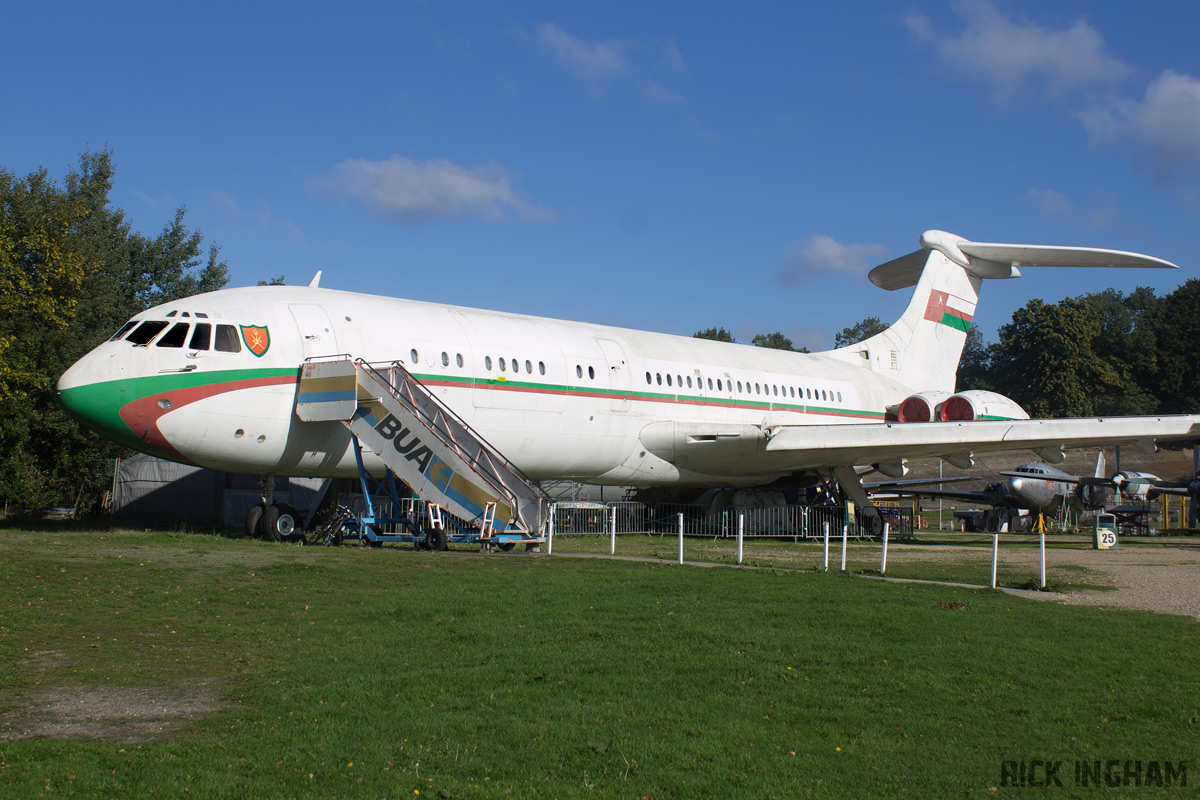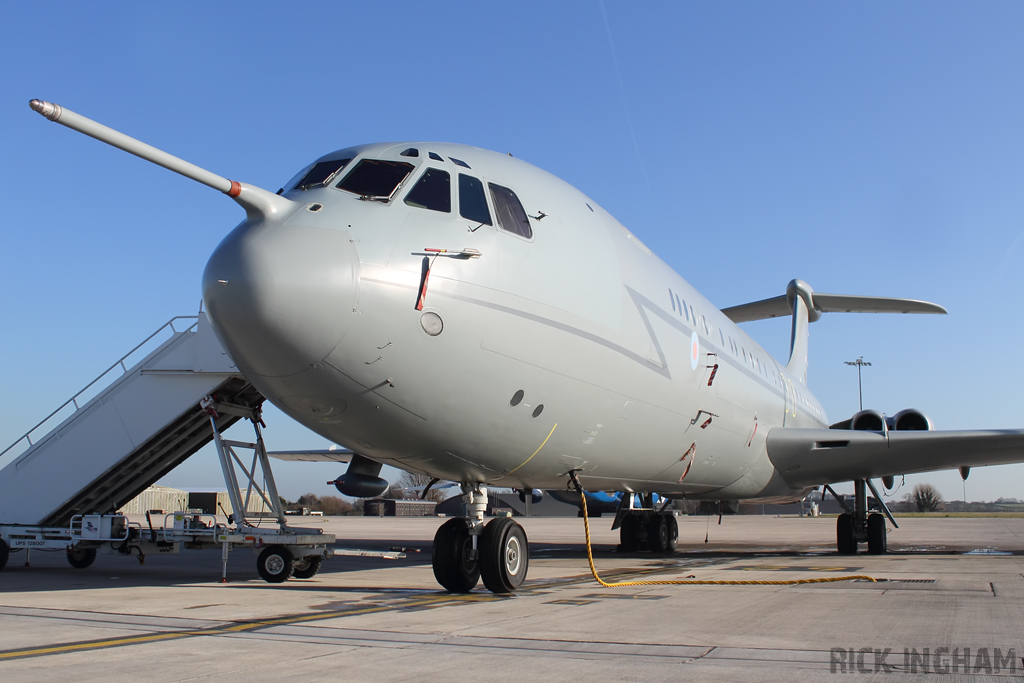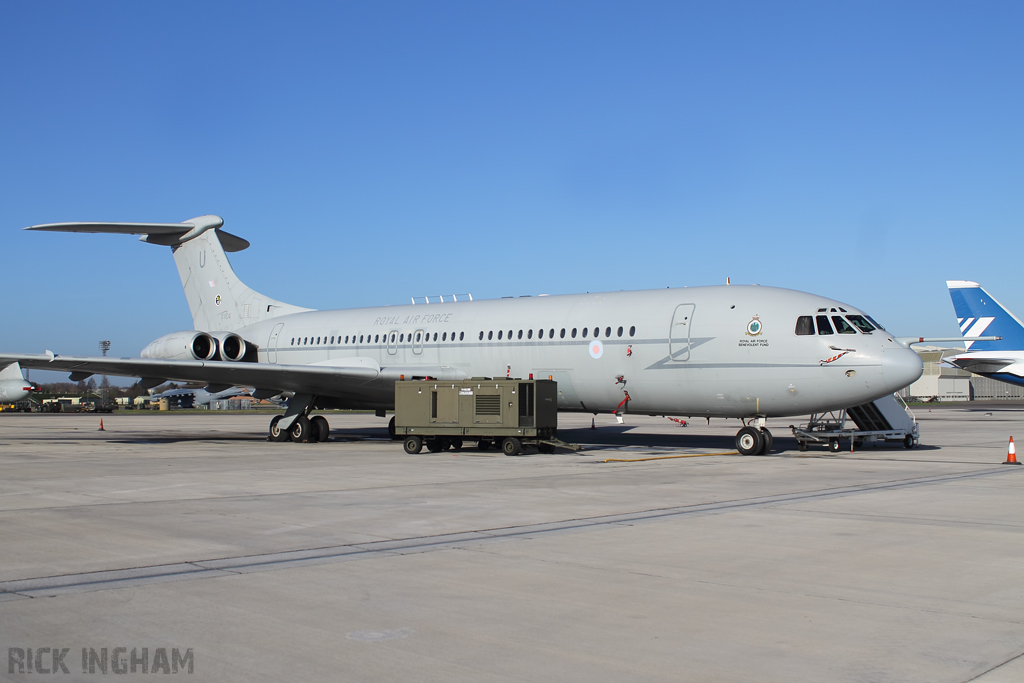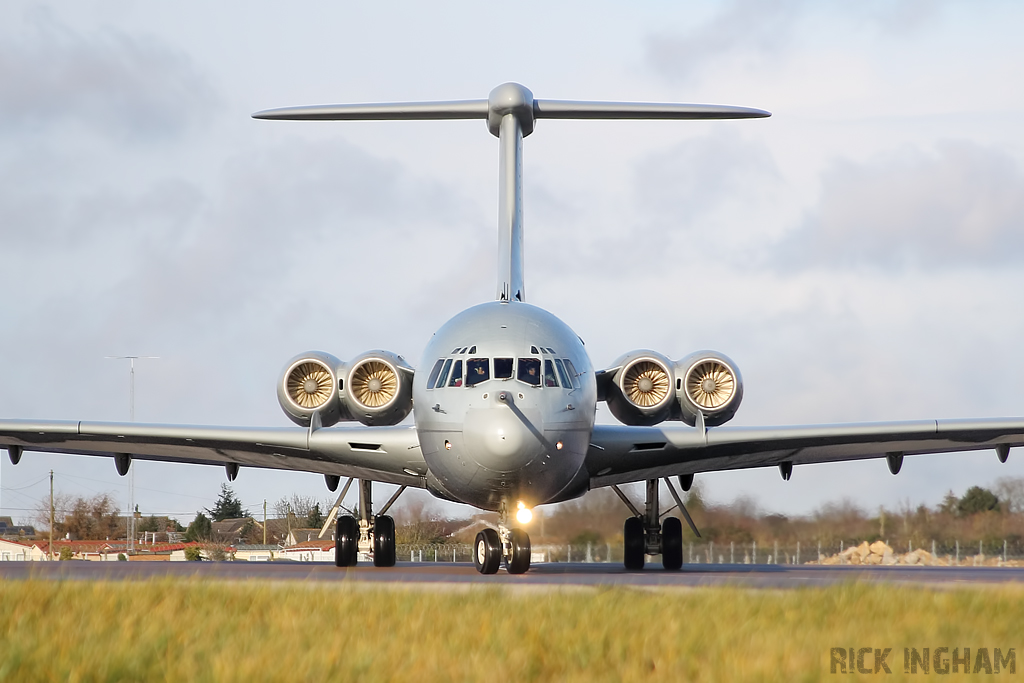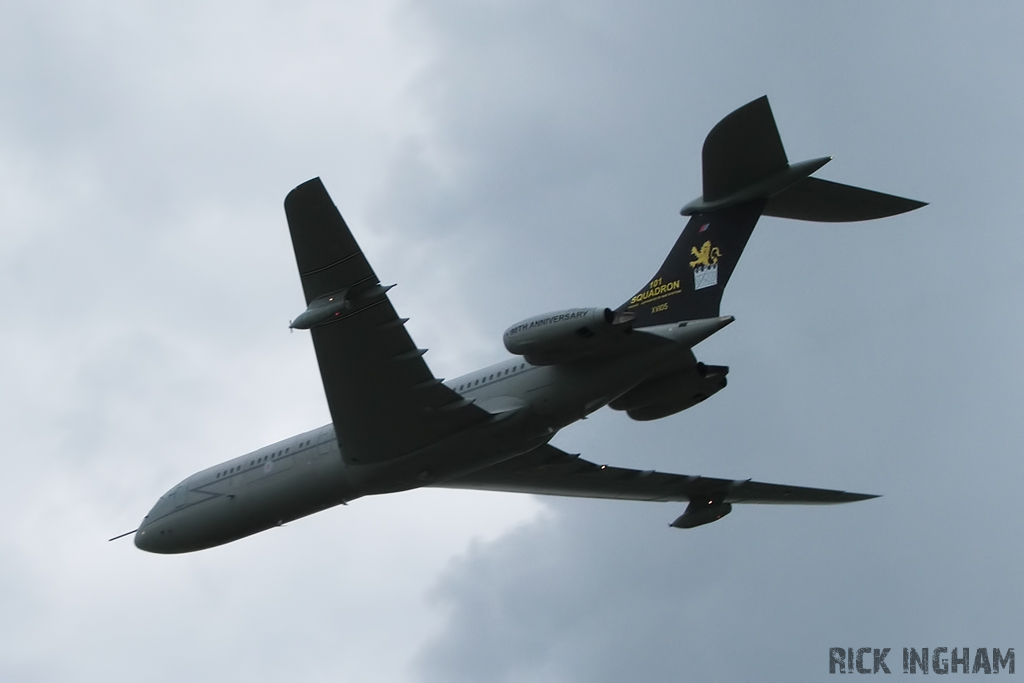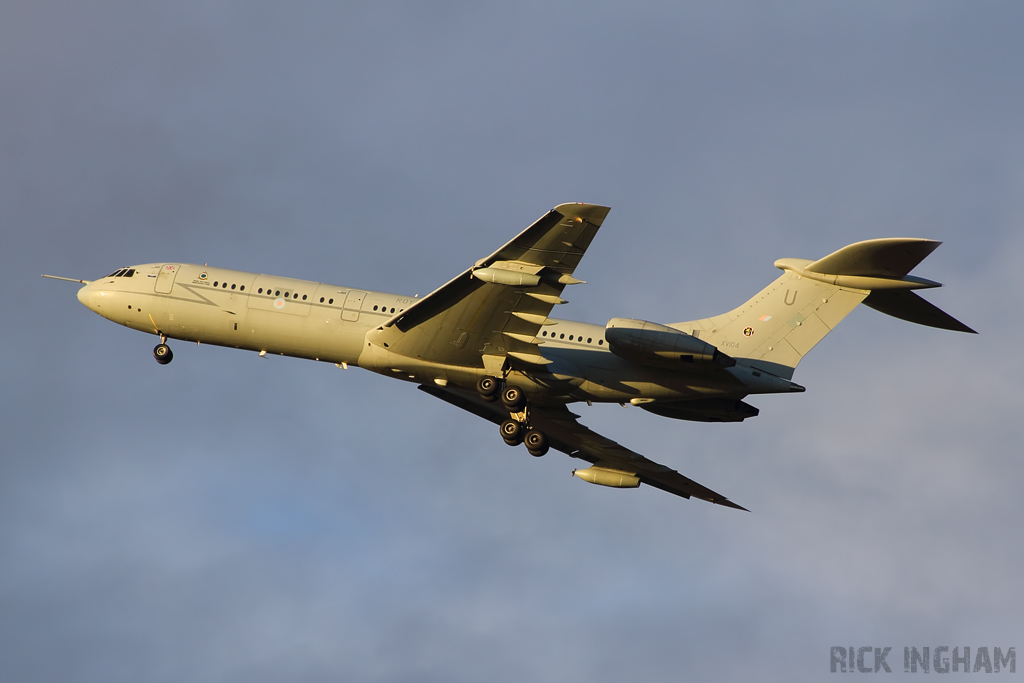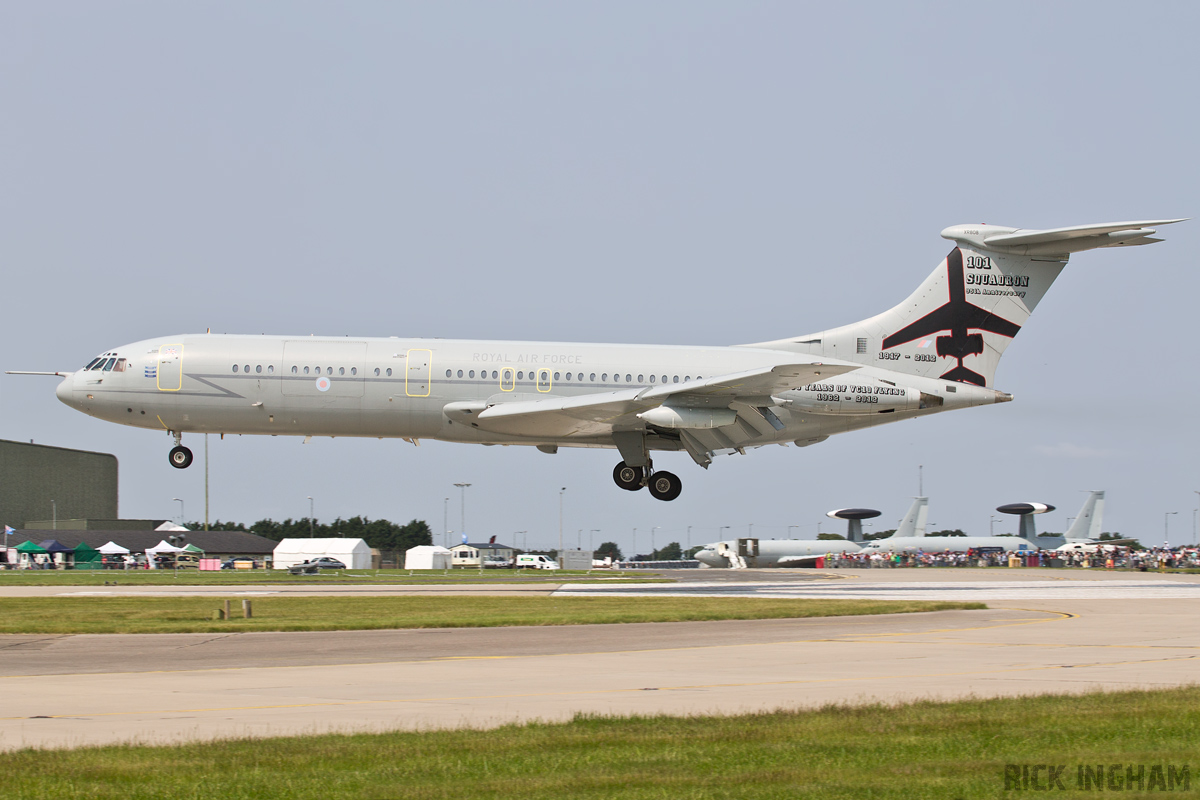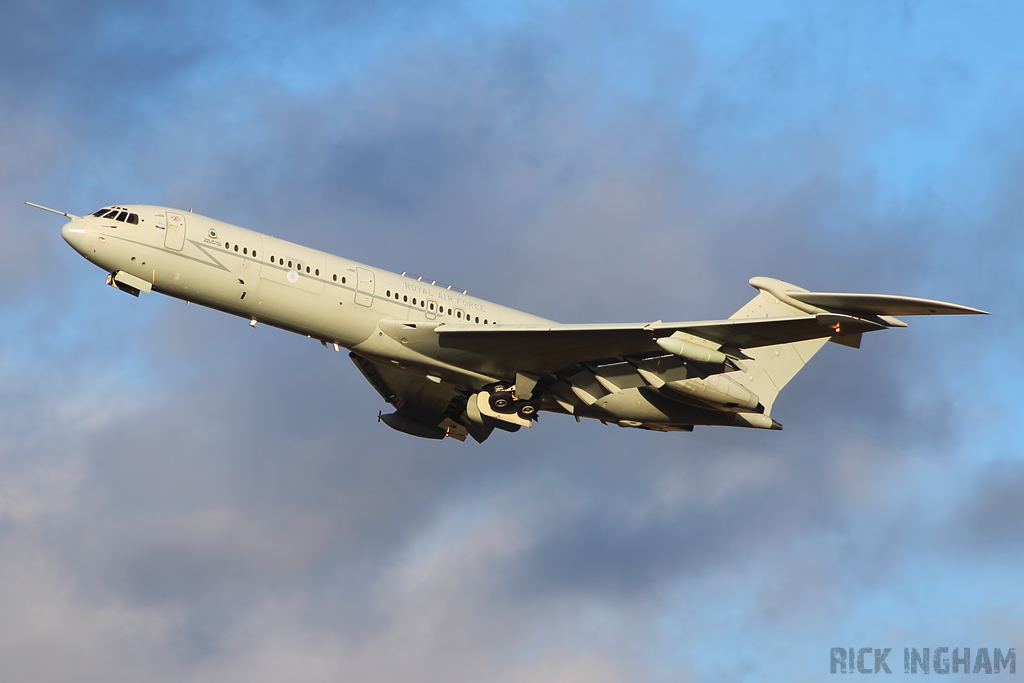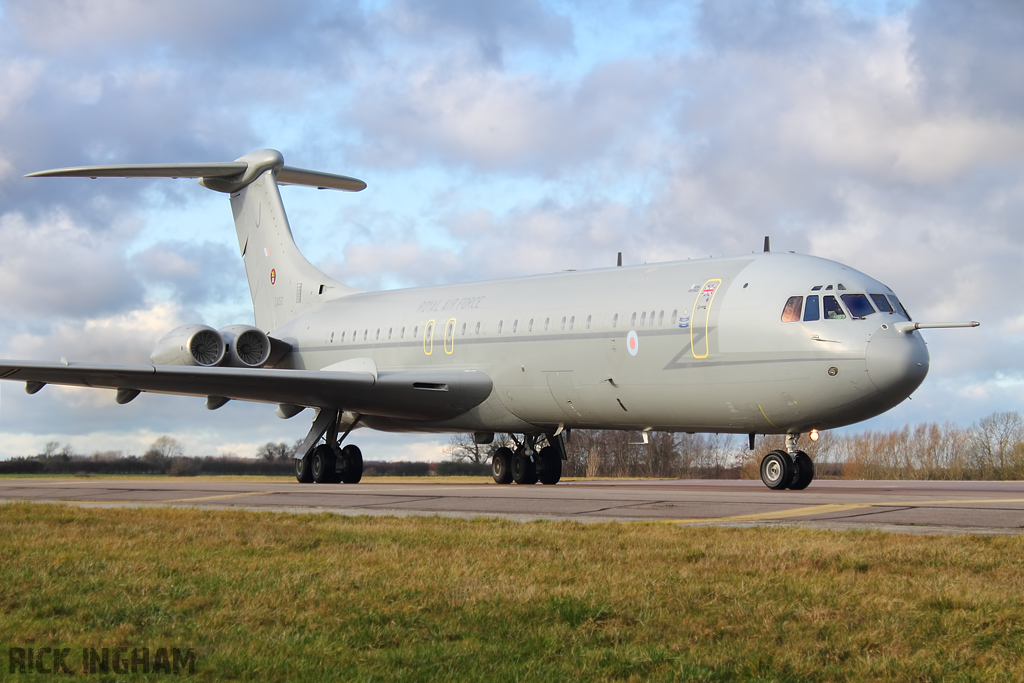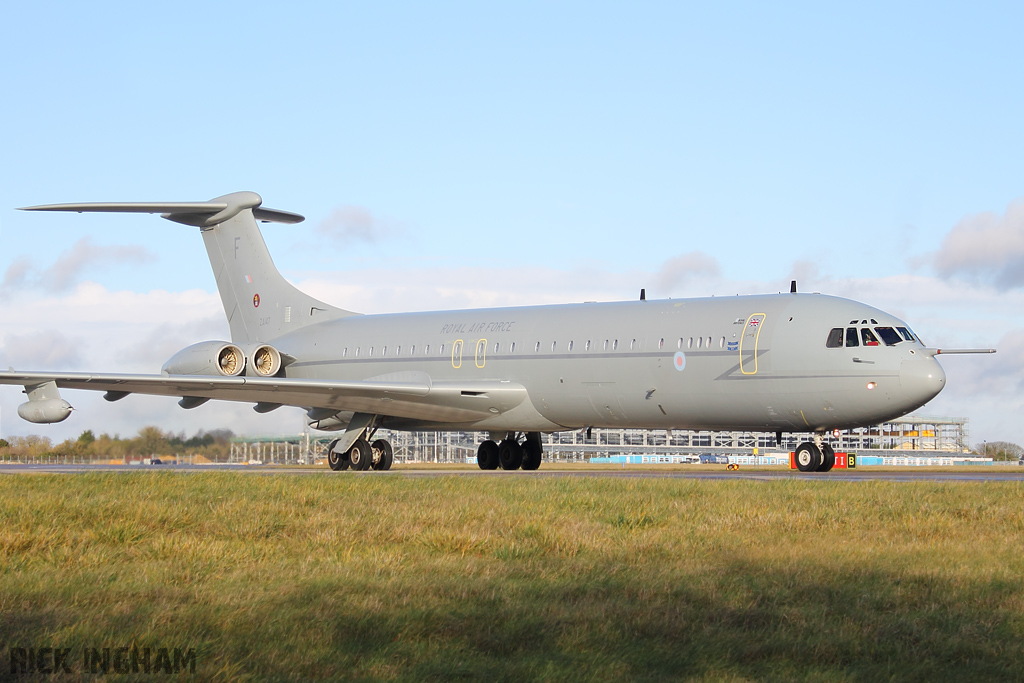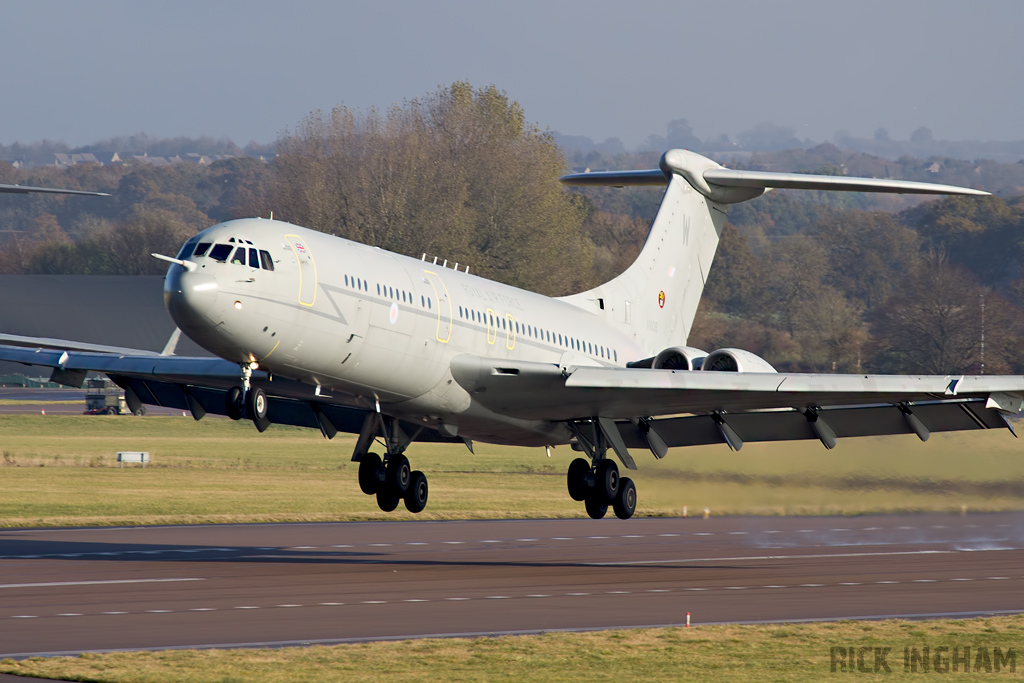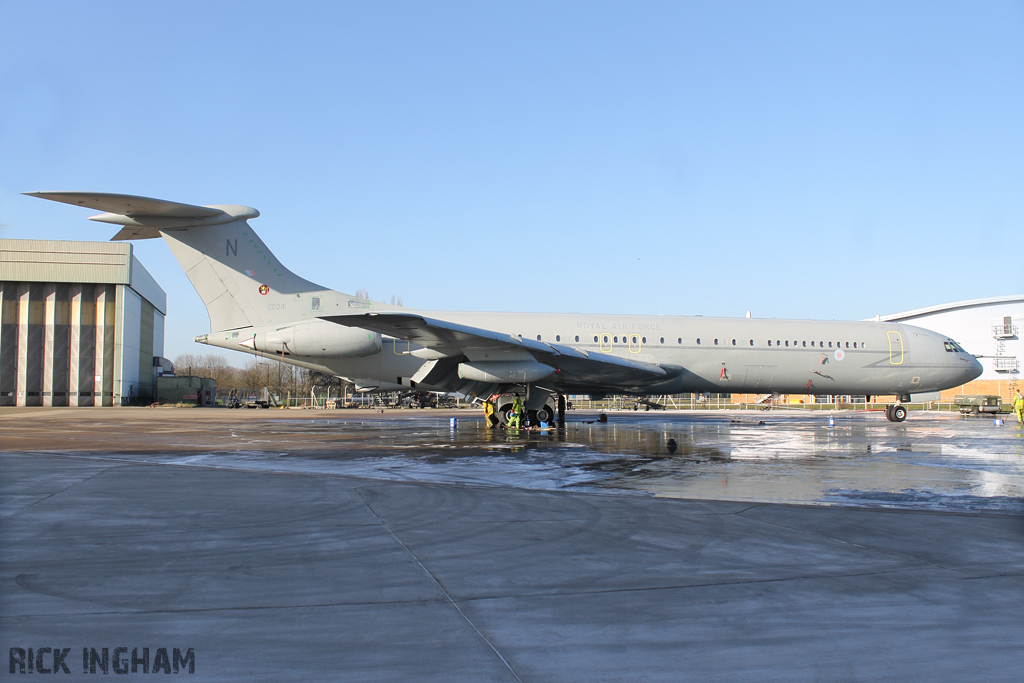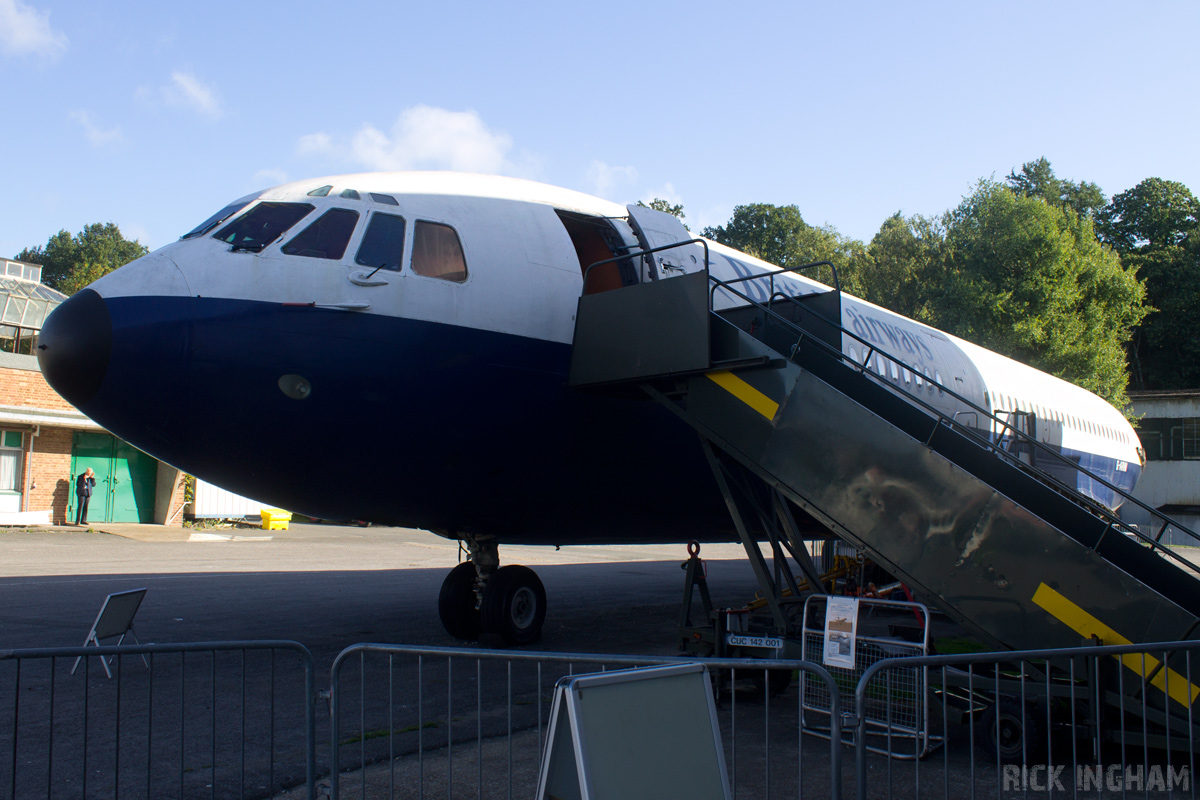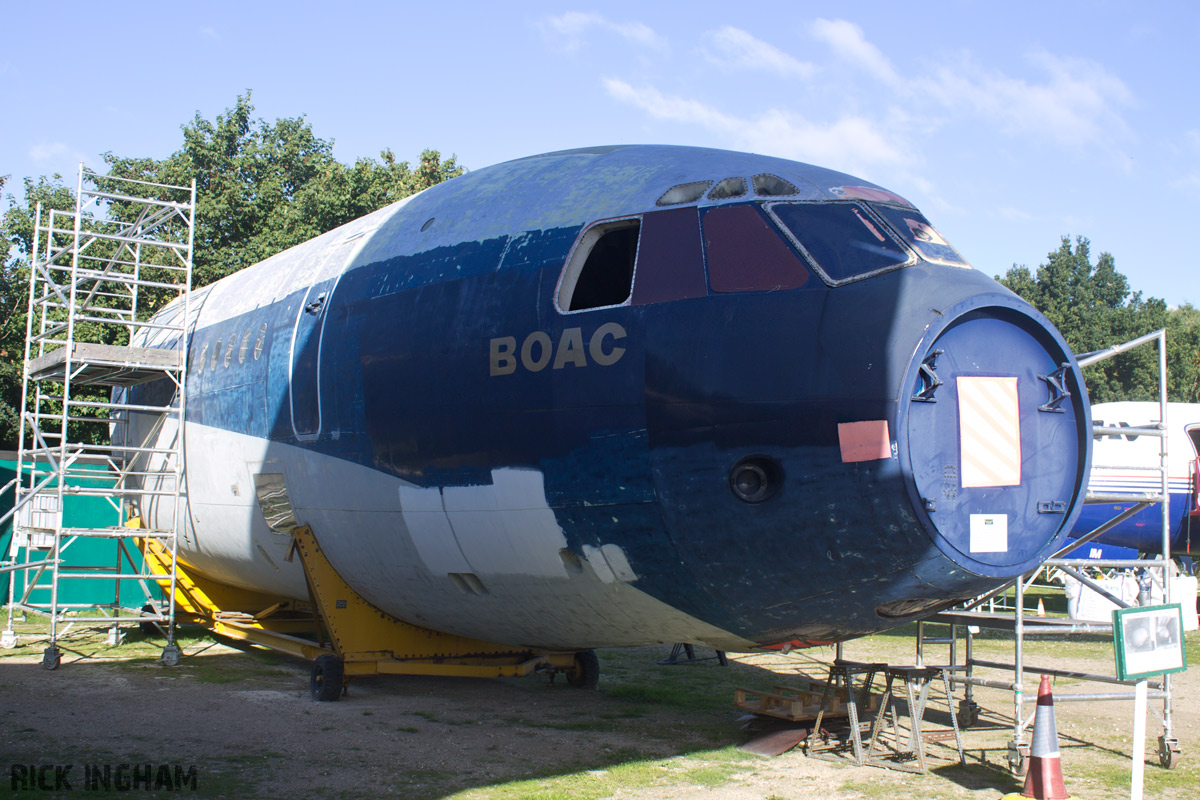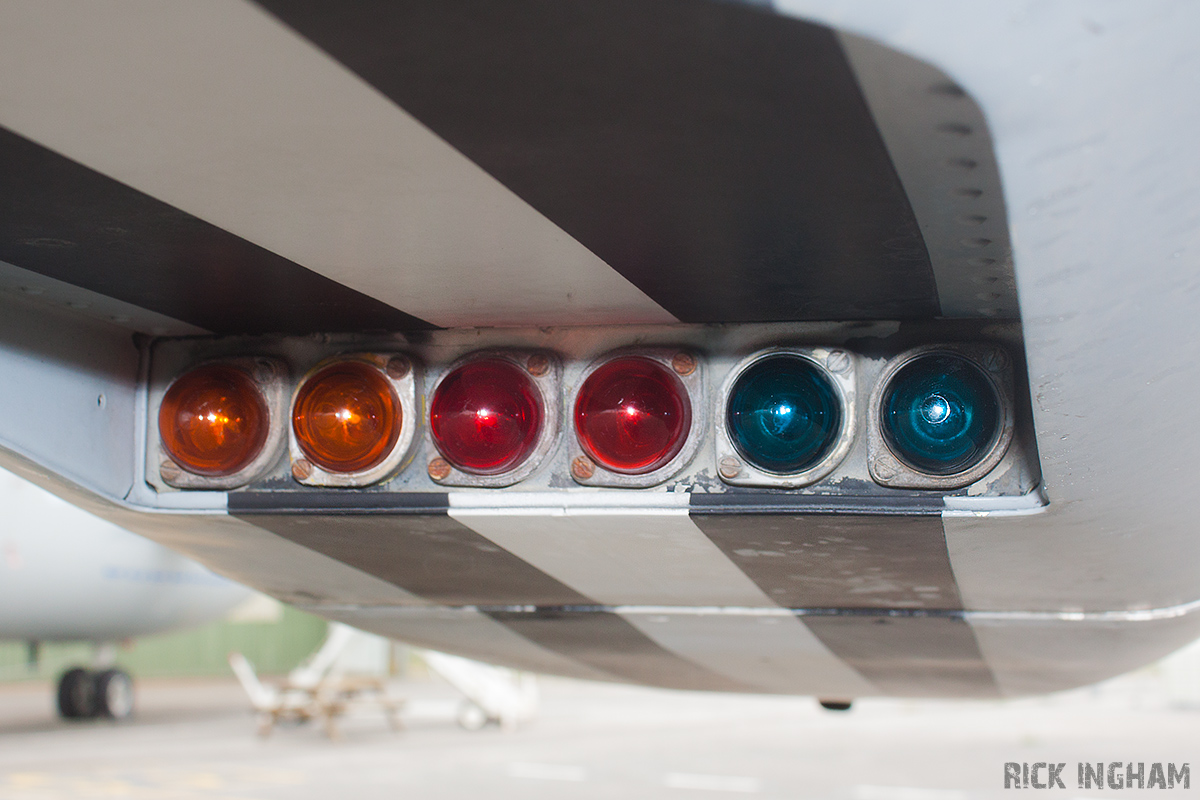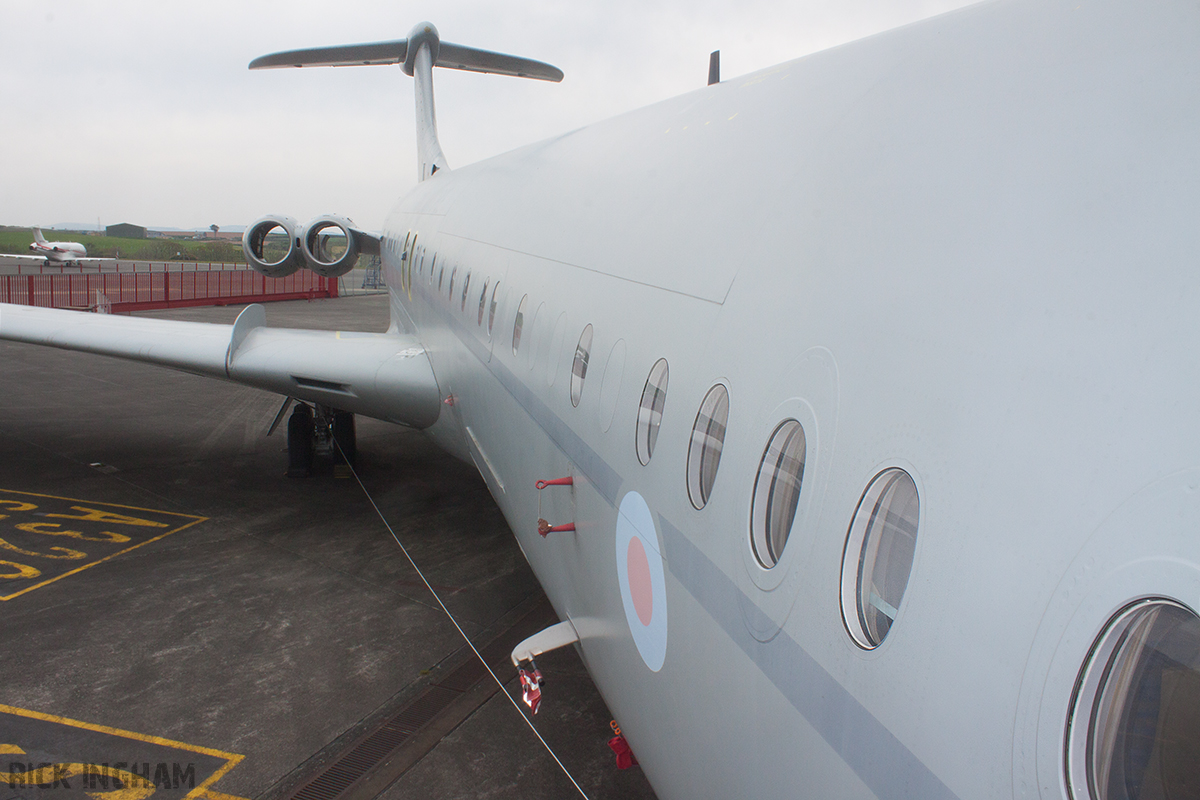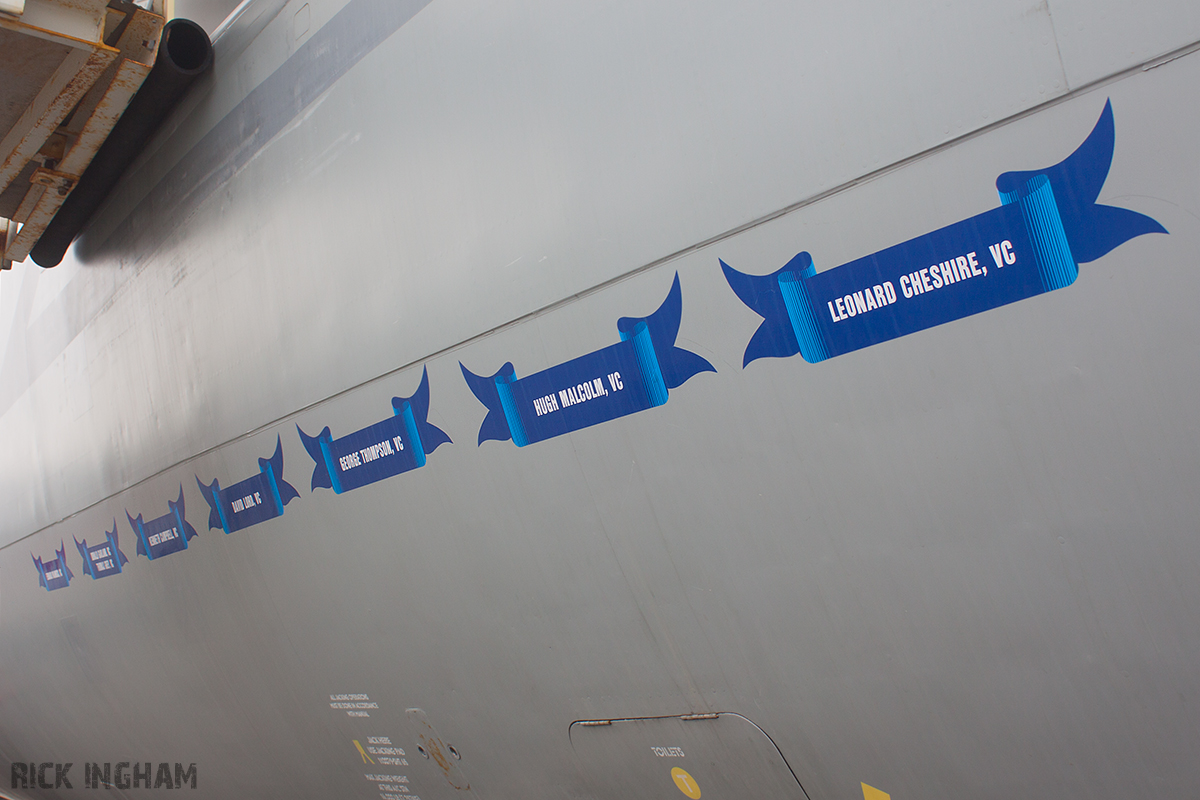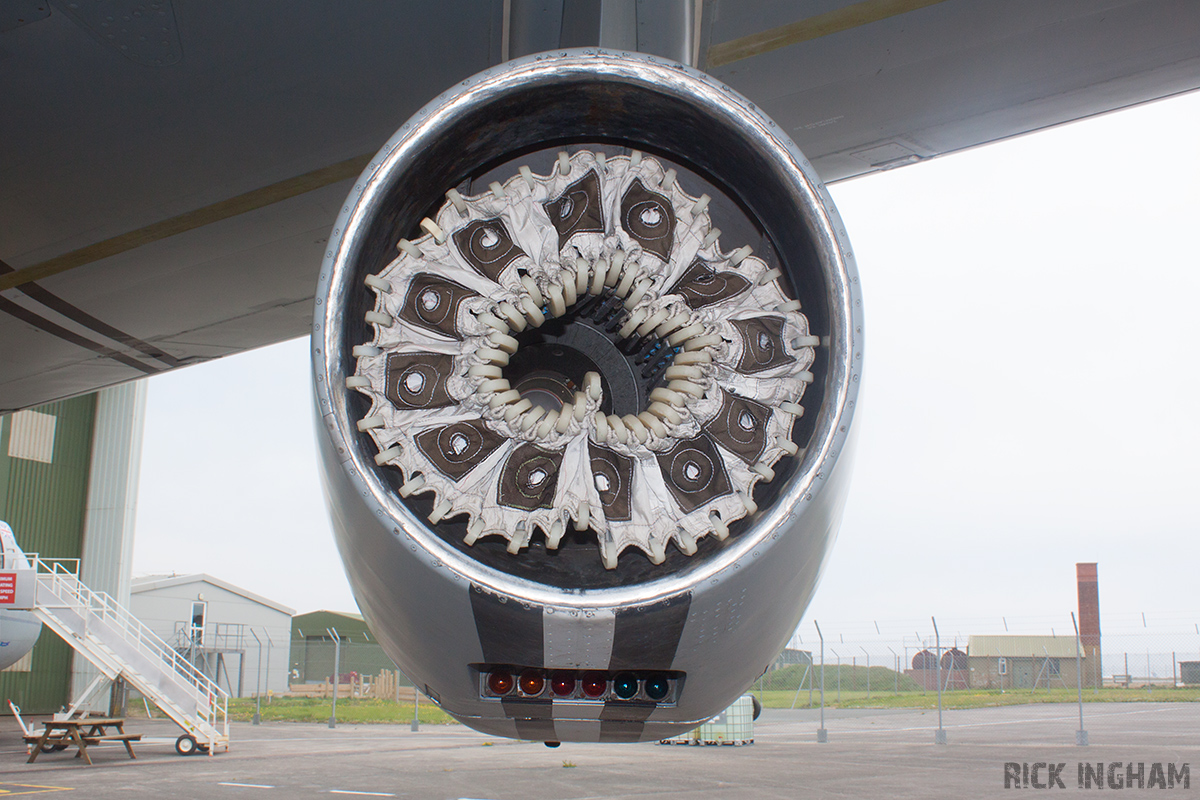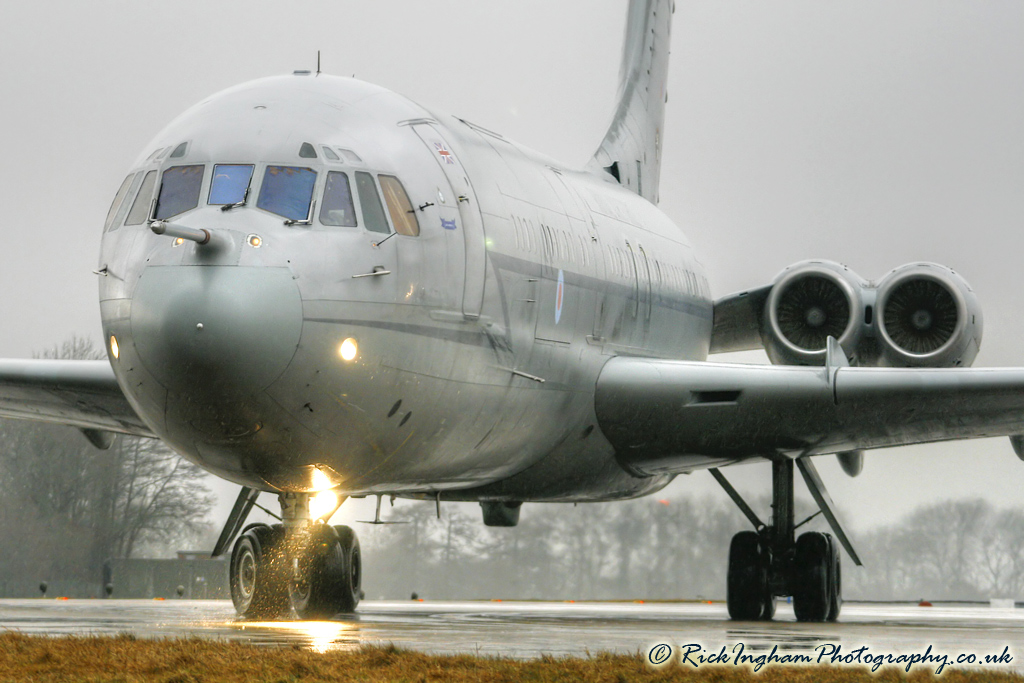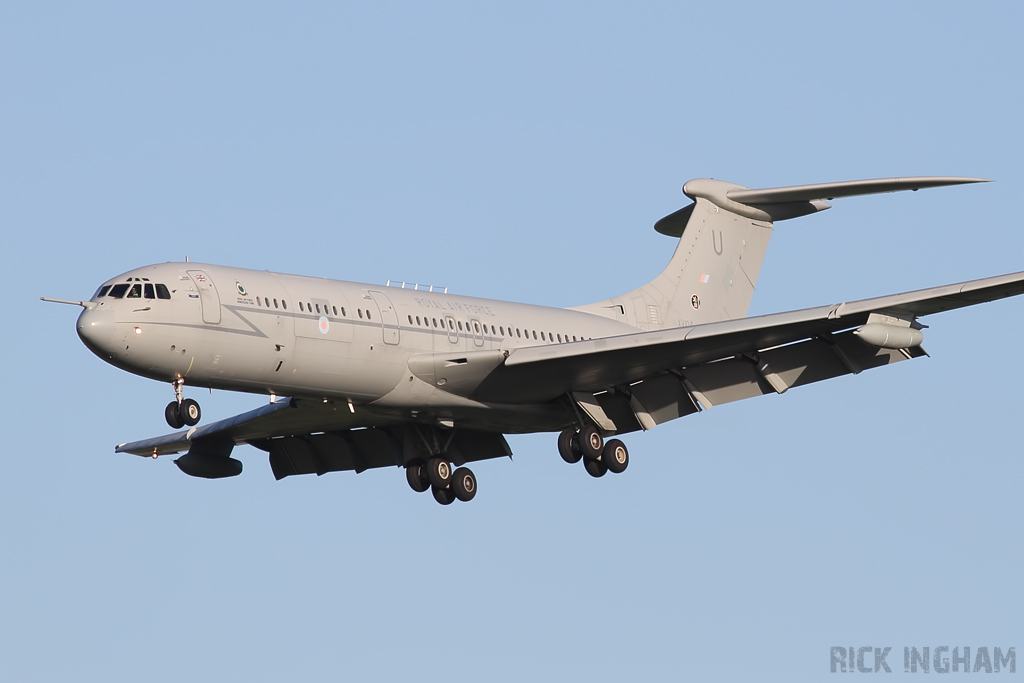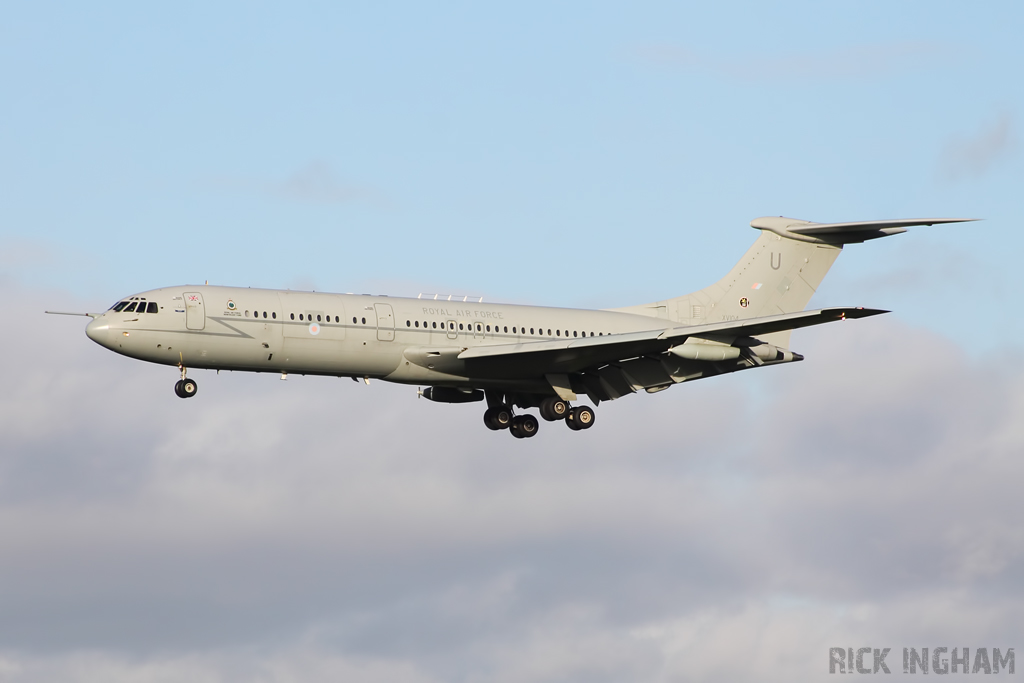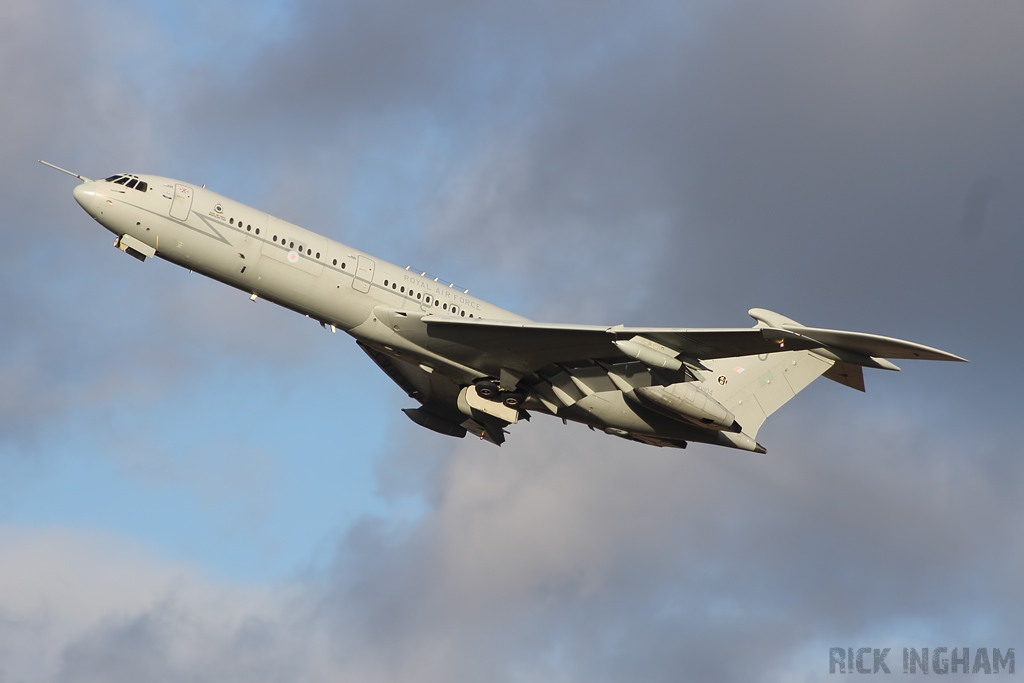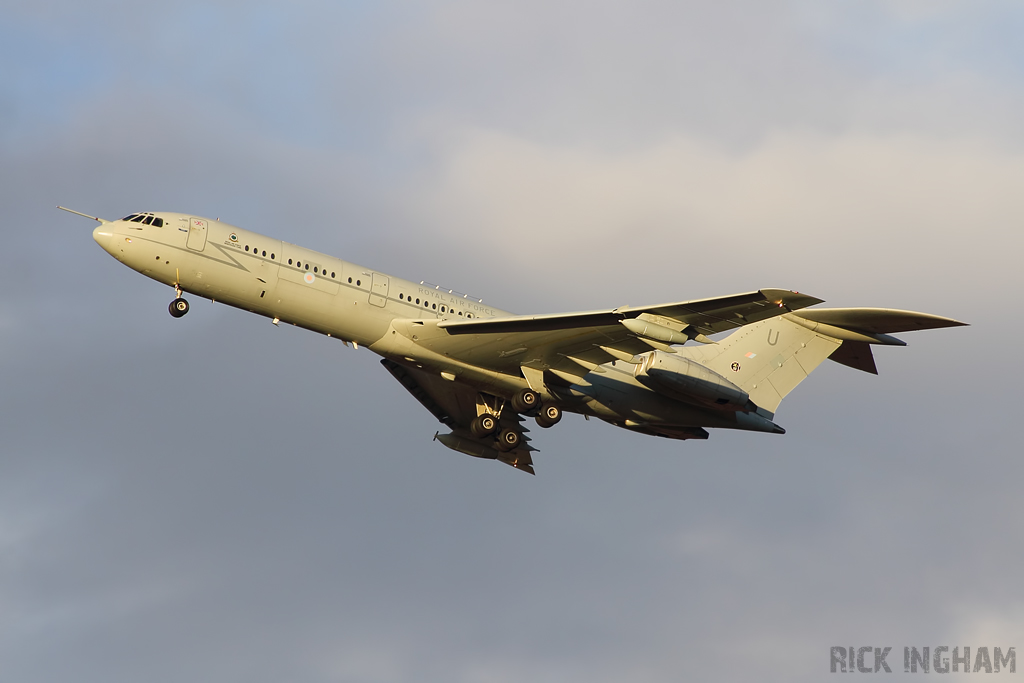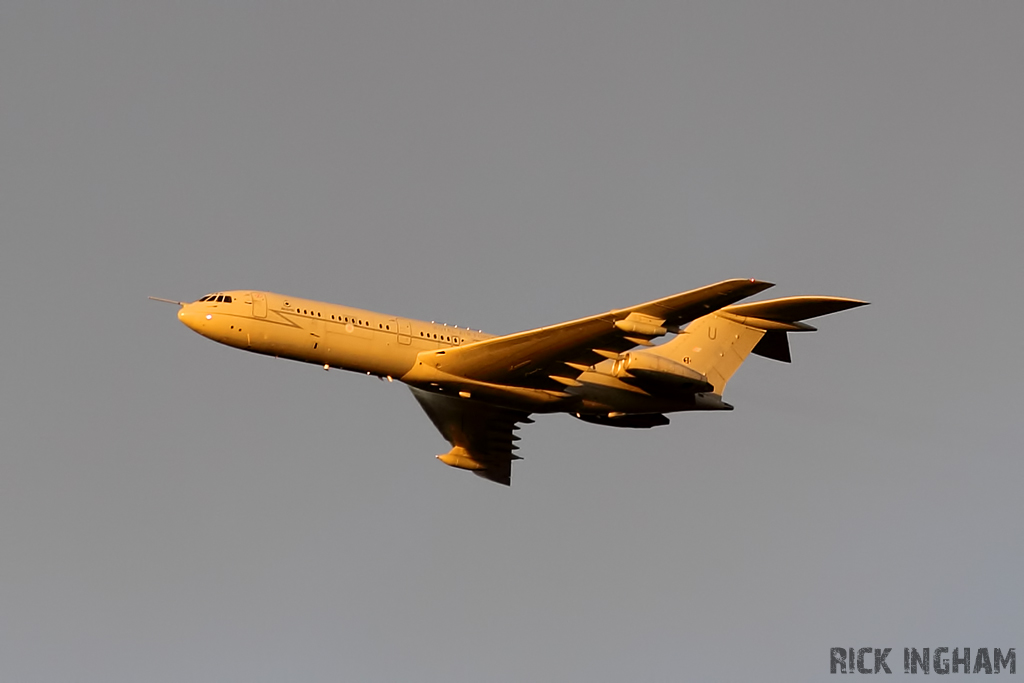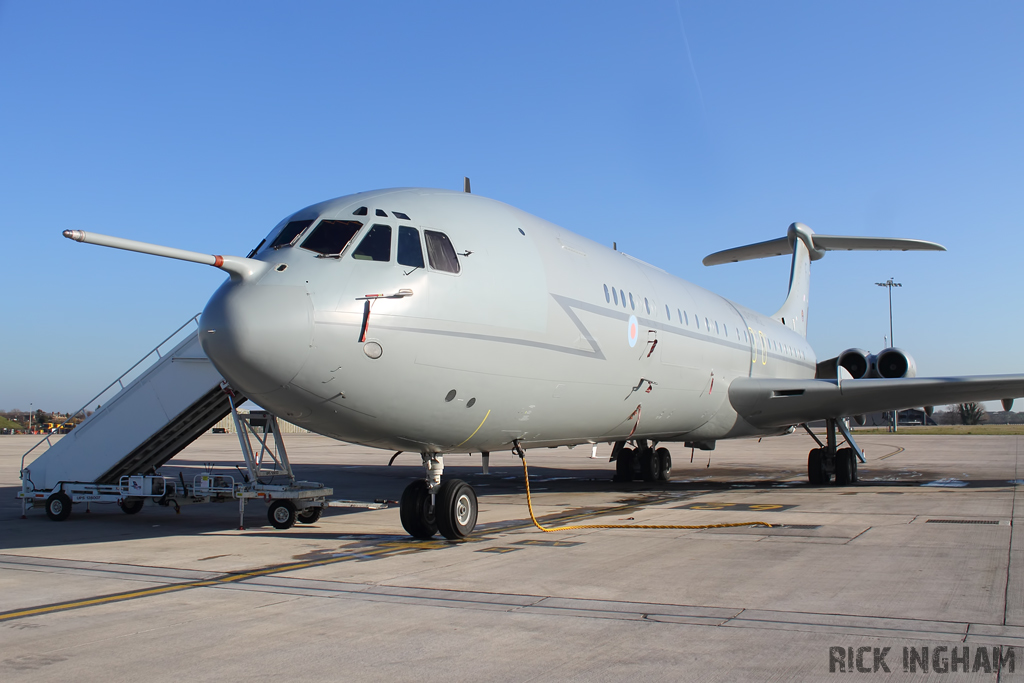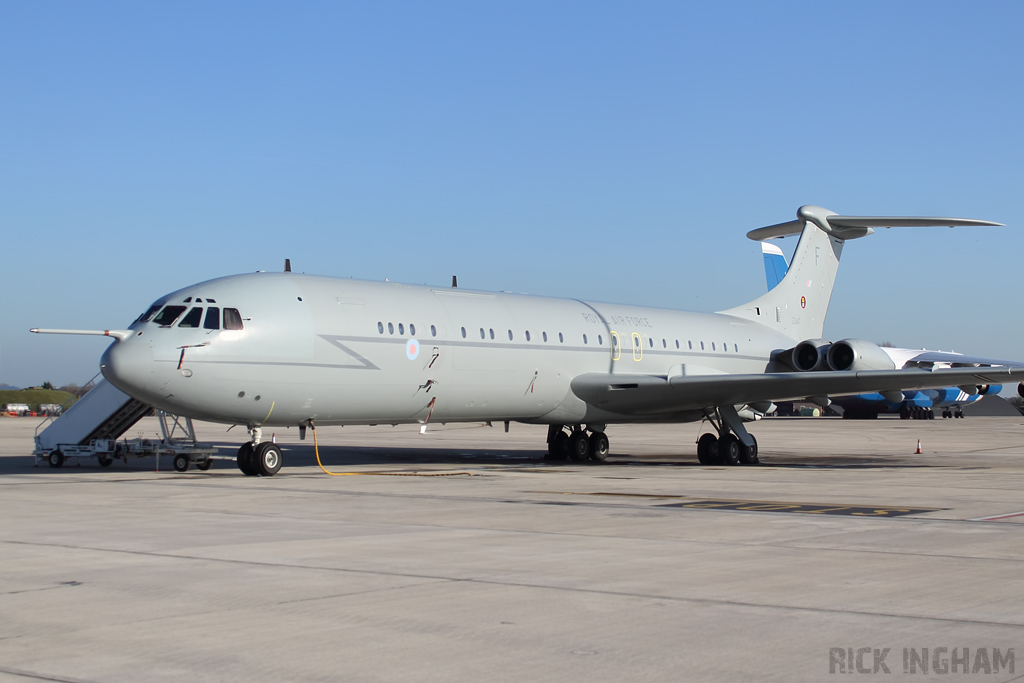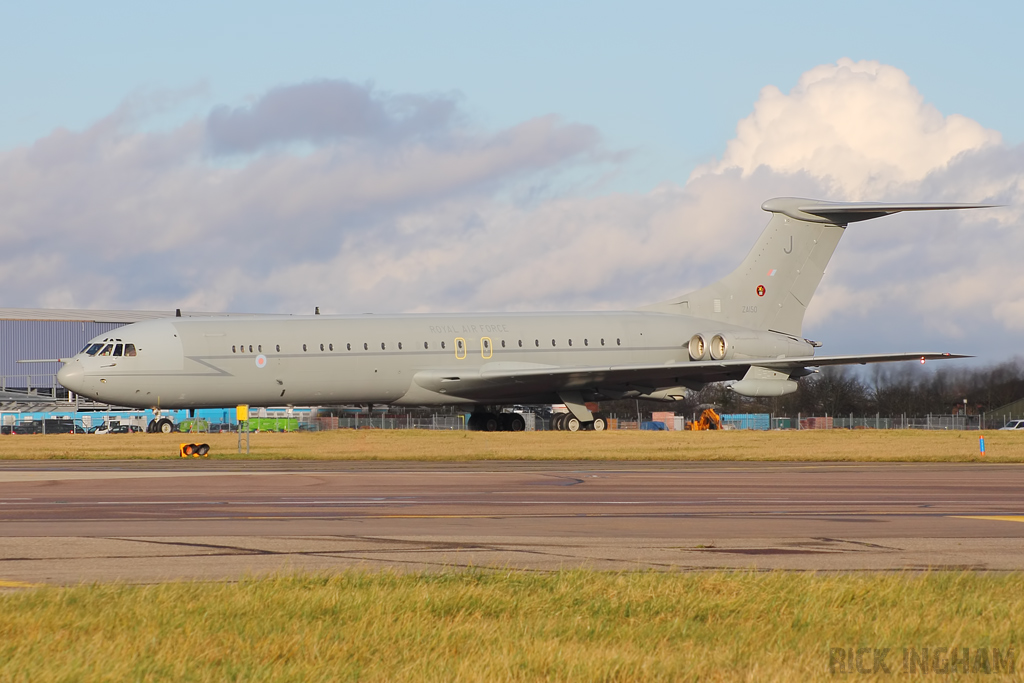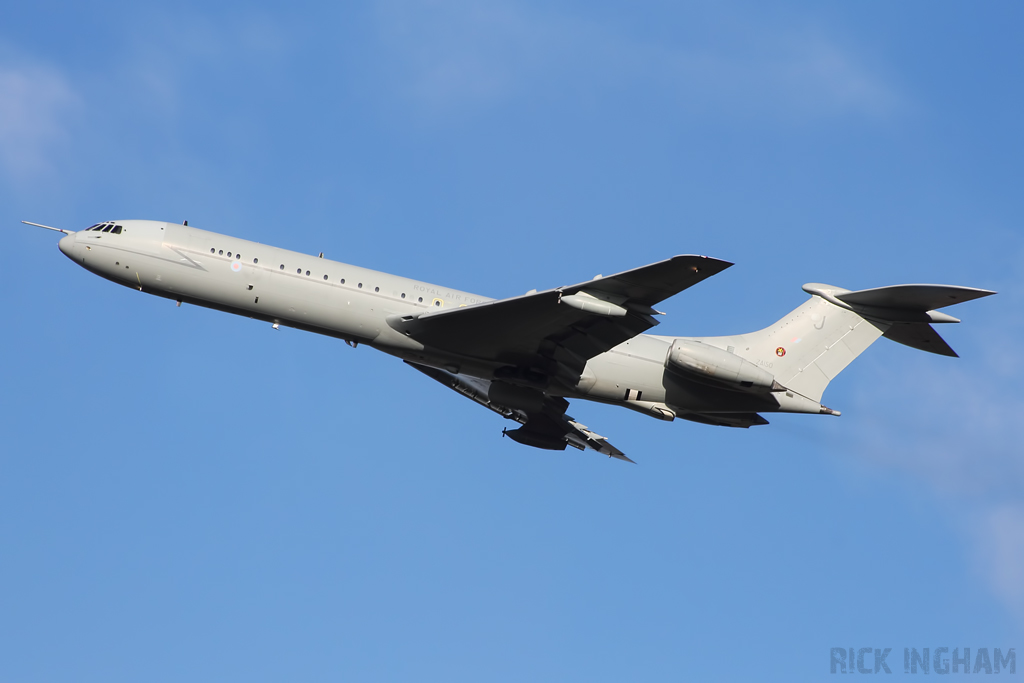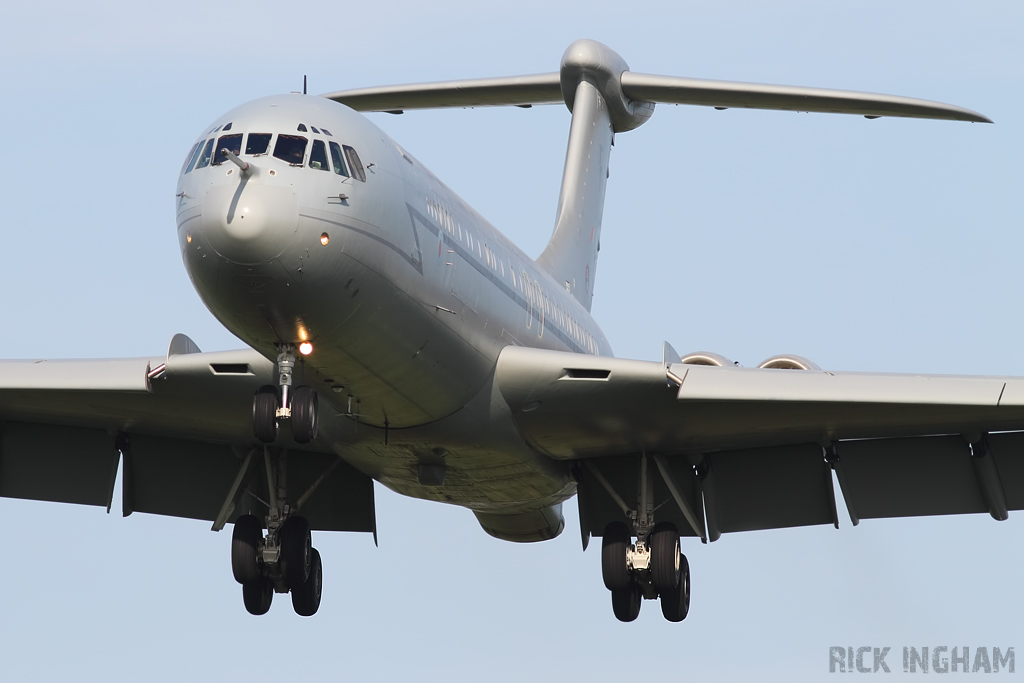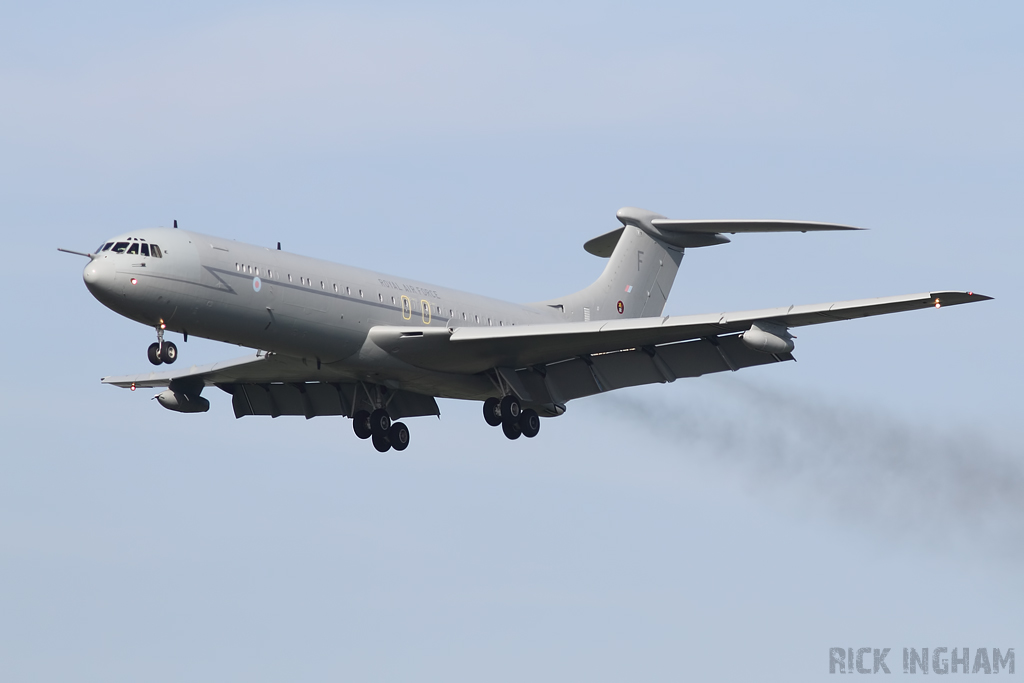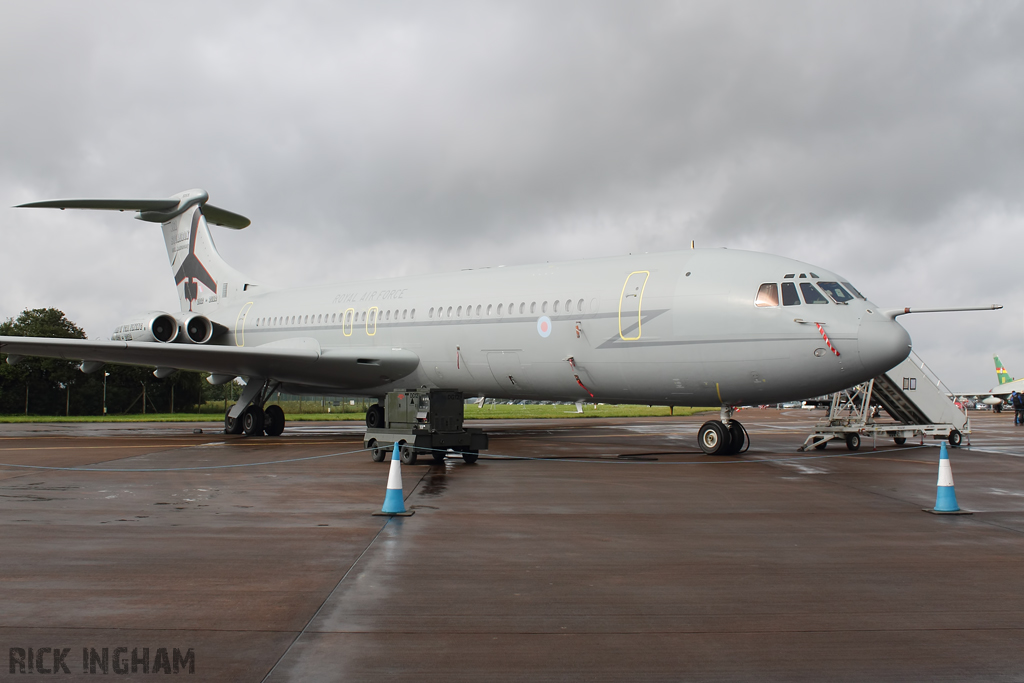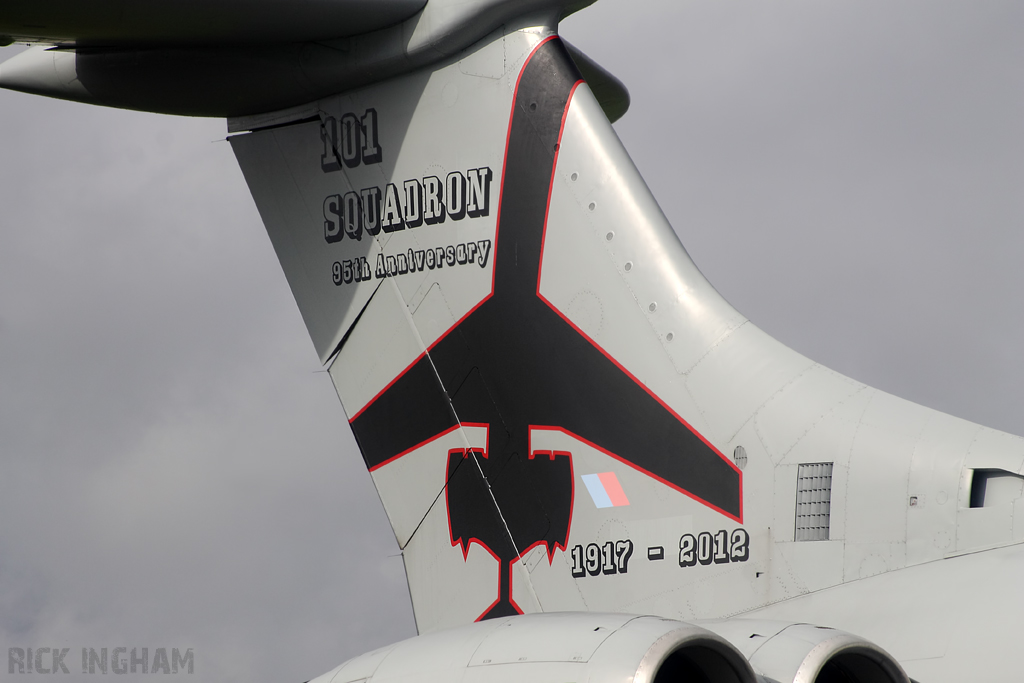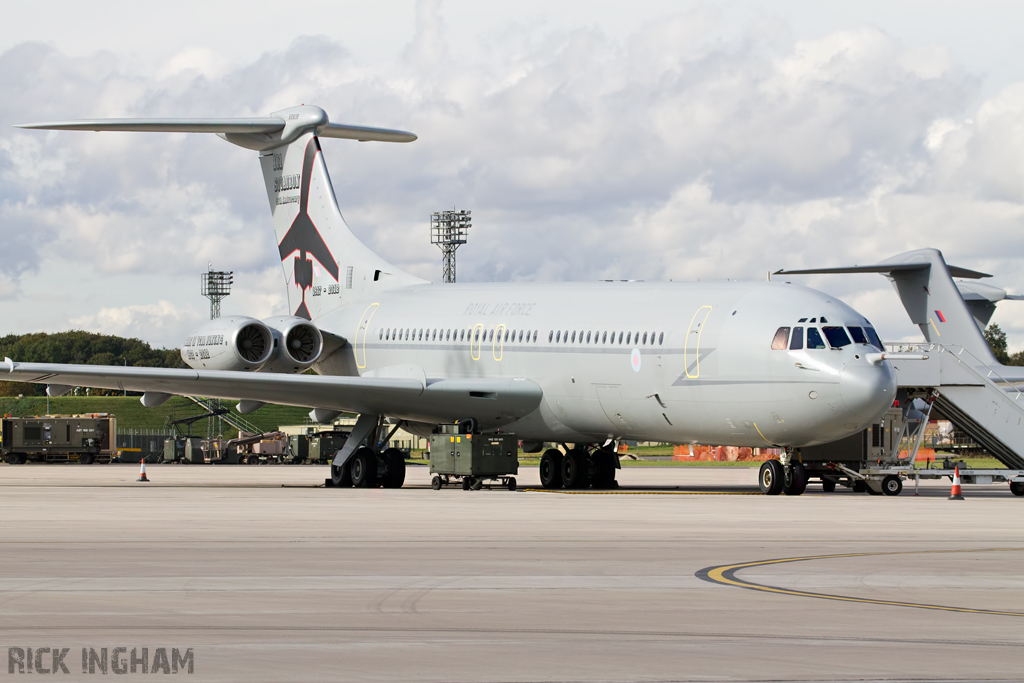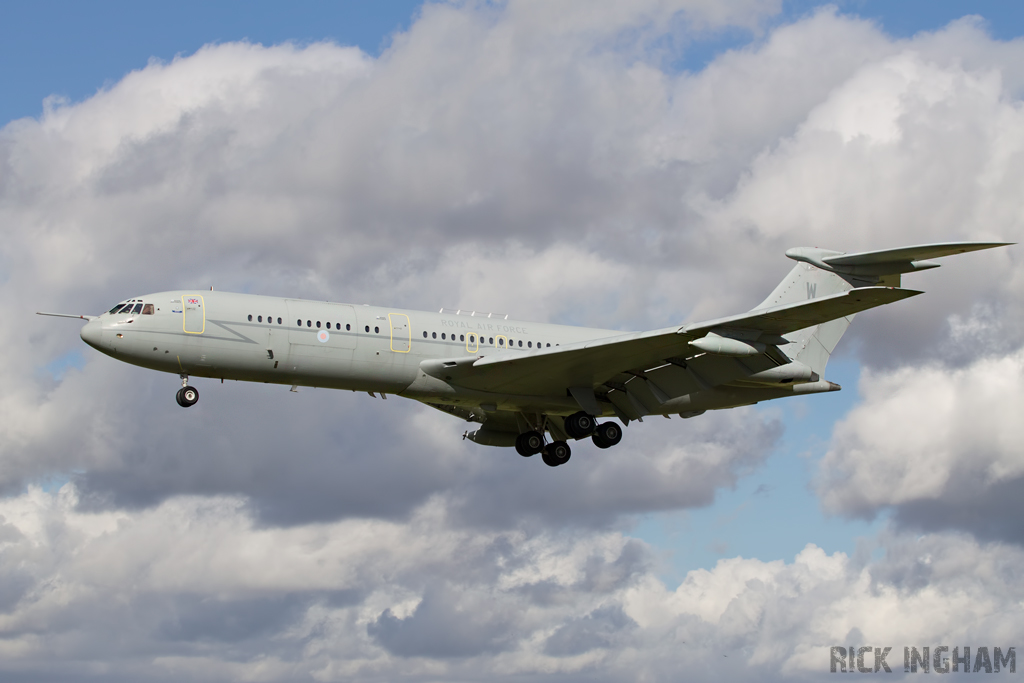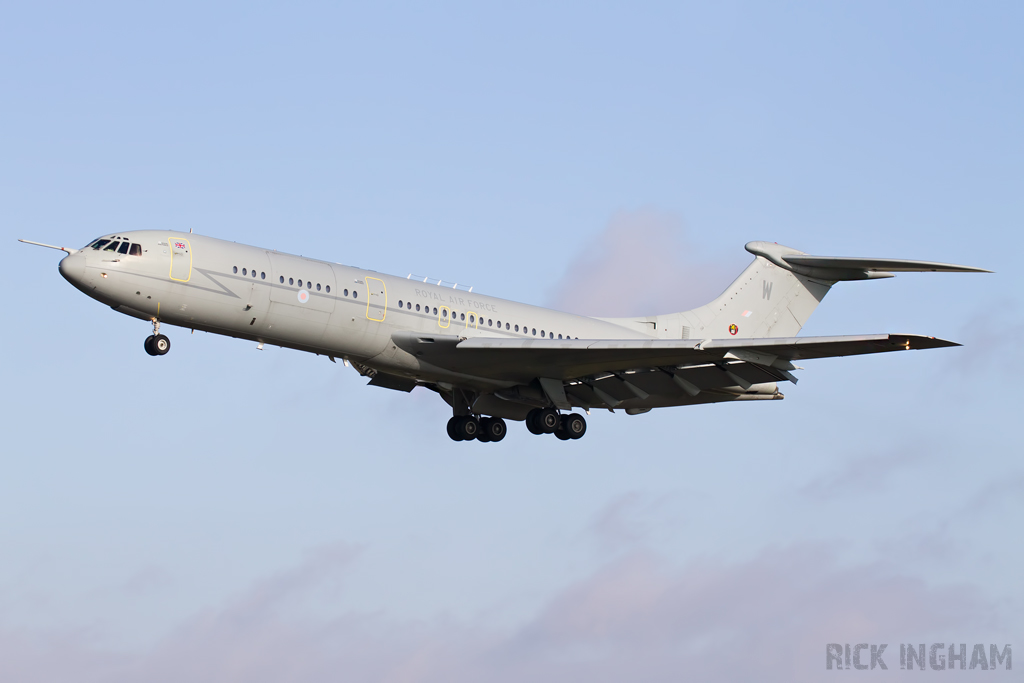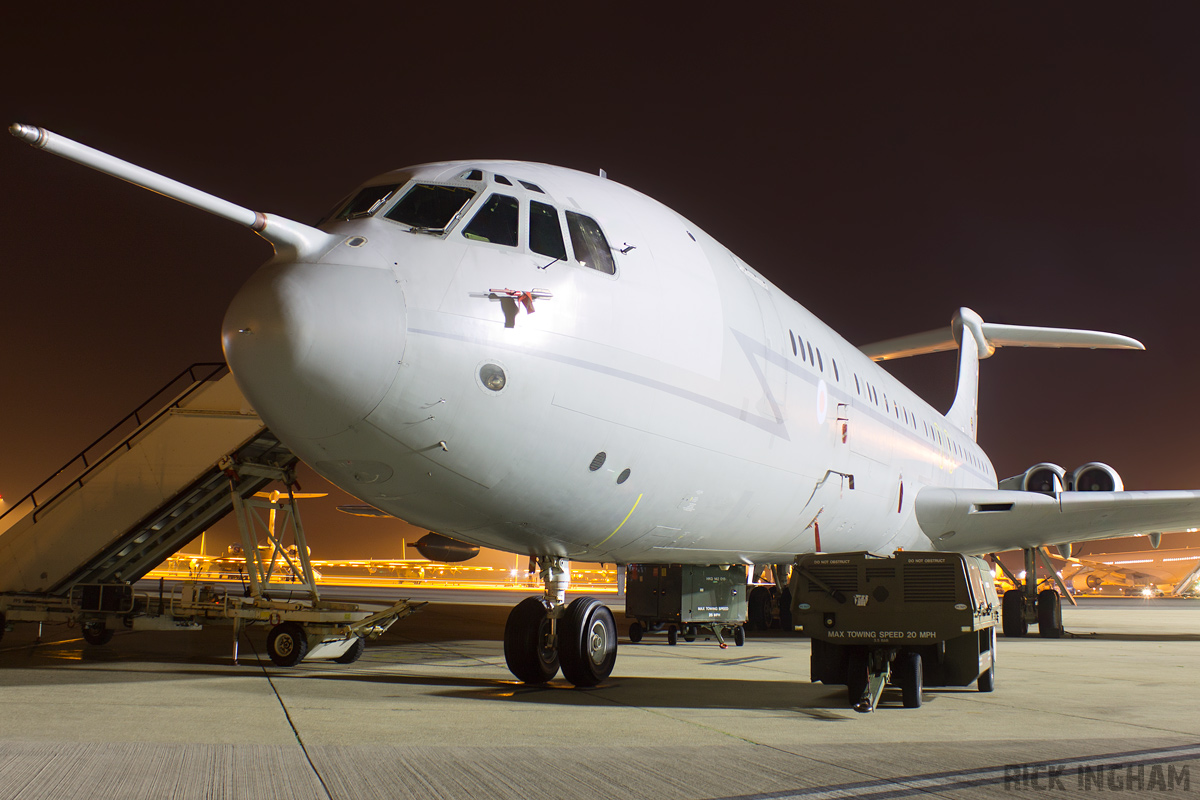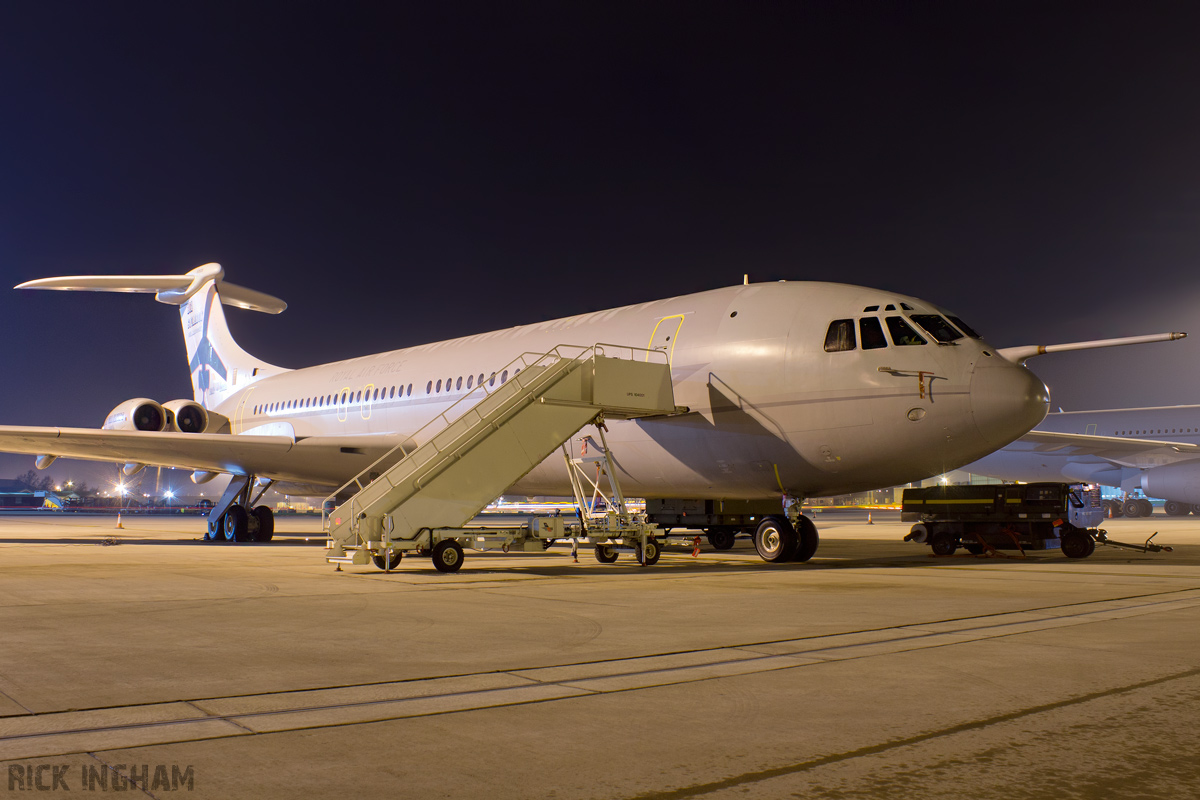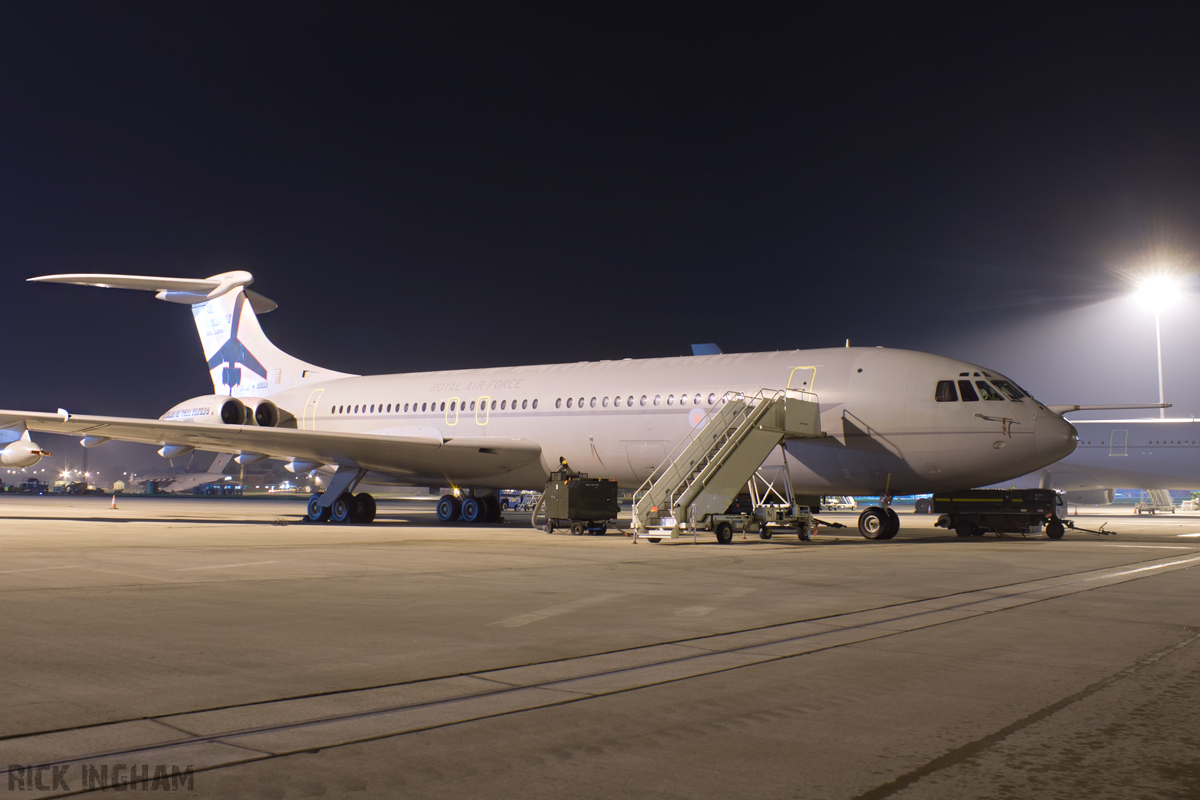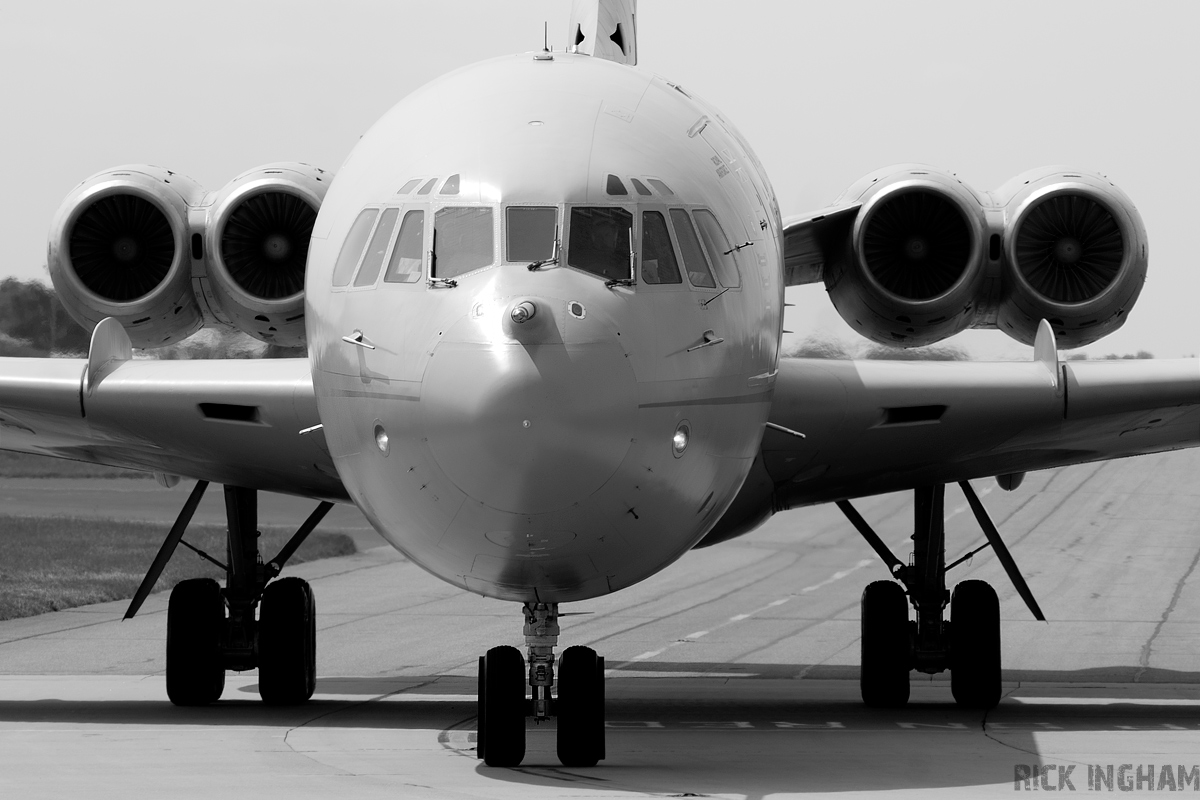On the 25th September 2013, ZA147/F the last Vickers VC10, made it’s final landing at Bruntingthorpe bringing an end to the type’s 51 years and 3 months in the air.
Originally a ship manufacturer, Vickers eventually moved into aviation producing airships, then a French Monoplane design. But Vickers’s earnt it’s reputation firstly in World War 1 producing more than 4,500 airframes and afterwards converting a Vickers Vimy to cross the North Atlantic non-stop.
In 1951, the Vickers Valiant made its first flight. This was Britain’s first four engine bomber and was considered a big project. The Royal Air Force approached Vickers to come up with a variant for troop/freight ferrying to replace the de Havilland Comet. The British Overseas Airways Corporation (BOAC) was a long haul airline currently operating the unsafe de Havilland Comet I. When BOAC heard about the concept of a passenger Valiant they immediately entered discussion with Vickers and the RAF about purchasing a few aircraft to replace the Comet I.
In October 1952 they won the contract to produce the military version, naming it the Vickers Type 1000 and in 1954 the RAF made a production order for six aircraft. A new requirement added was that the aircraft was to have short take off capabilities, so the RAF extended the development period.
In 1954 BOAC ordered 15 Boeing 707’s to replace the intermediate Comet 4s but it soon become clear the heavier 707 wouldn’t be able to operate at the hot and high airports such Karachi, Singapore, Kano and Nairobi. BOAC declared they would be happier with the Britannia rather than the Vickers VC7 (Type 1000’s civil name, being Vicker’s 7th civil aircraft). This decision was also influenced by political pressure at the time. Most of the production for the de Havilland Comet 2 was based at Shorts Brothers in Northern Ireland and when the aircraft was cancelled, unemployment soared. With the RAF and BOAC electing for the Britannia, jobs in the area were secured.
With the first flight of the prototype just a few months away, in 1955 the RAF order was cancelled and BOAC showed no interest to keep the project going as it was looking towards the Boeing 707, Bristol Britannia and the de Havilland Comet 4. The result of this was that a relatively complete aircraft that showed a lot of promise for all the Vickers employees was scrapped before their eyes.
Vickers managing director George Edwards said:
"We have handed to the Americans, without a struggle, the entire world market for big jet airliners."
In 1957, BOAC issued a requirement for a Comet and Brittania replacement with specifications tailored to their Middle-East and African routes, a specification that was far above what could be reached by the 707 or the DC-8. Vickers responded to this by submitting several design studies that they had been working on since the V.1000 cancellation. Several other companies proposed a replacement including de Havilland offered the DH.118, a development of the Comet 5 project while Handley Page proposed the HP.97, based on their V bomber, the Victor.
The Vickers VC10 was an all new design using techniques applied on the Type 1000 plus it’s Rolls Royce Conway engines. The design had a very generous wing equipped with wide flaps and full span leading edge slats for good take-off and climb performance and its rear engines gave an efficient clean wing and reduced cabin noise. The engines were also further from the runway surface than an underwing design which kept them well away from the dust of the African runways. The entire airframe was to be coated against corrosion and flight-deck technology was extremely advanced, with a quadruplicated automatic flight control system (a "super autopilot") intended to enable fully automatic zero-visibility landings. Vickers designer Sir George Edwards was said to have stated that this plane was the sole viable option unless he were to reinvent the 707.
Vickers calculated that it would need to sell 80 VC10s at about £1.75 million each to break even.
BOAC eventually ordered 25 aircraft which left another 55 remaining to be sold. Vickers offered a smaller version (the VC11) to BEA but this was rejected in favour of the Hawker Siddeley Trident.
Vickers revamped its production plans to try to achieve break-even point with 35 sales at £1.5 million each, re-using jigs from the Vickers Vanguard.
On 14 January 1958 BOAC increased its order to 35, with options for a further 20 aircraft which meant orders from BOAC alone now allowed break-even, so the use of the Vanguard jigs was abandoned and new production jigs made.
BOAC had calculated that the Boeing 707 cost £4.10 per passenger-mile while the VC10 would cost £4.24. This information was leaked and lead to the loss of several foreign orders.
The difference brought calls to cancel the order in favour of the 707.
The VC10 was rescued by the British government and in order to offer more economy Vickers began work on the Super 200 development of the VC10 with more powerful Conway engines and a 28 foot longer fuselage 23 more seats than the Boeing 707-320.
January 1960 saw Vickers experiencing financial difficulties and didn't think it would be able to deliver the 35 VC10s without making a loss.
It offered to sell ten Super 200s to BOAC at £2.7 million each which BOAC revealed they were unconvinced they had a role for the already ordered 35 VC10s and doubted the airline's ability to fill all 200 seats. The government stepped in again on Vickers' behalf with an order for Super 200s, placed on 23 June 1960.
In May 1961 BOAC amended its order to 15 Standard and 35 Super VC10s, and in December the order was reduced again to 12 Standards.
On the 29th June 1962, the prototype aircraft G-ARTA flew for the first time and a Certificate of Airworthiness was awarded on 23 April 1964 which led to the VC10 being introduced to regular passenger service between London and Lagos on 29 April.
By the time deliveries were ready to begin in 1964 airline growth had slowed and BOAC wanted to cut its order to seven Supers. In May the government stepped in yet again, placing an order for VC10s to operate as military transports to absorb over-production.
To BOAC's surprise the passengers loved the VC10. The rear engined layout made for a relatively quiet cabin and the efficient wings gave it a very smooth ride over turbulence. These qualities actually made passengers request the VC10 when given the choice, and BOAC used them to advantage when advertising with the phrases 'Swift and silent' and 'A little VC10derness'.
A few export customers were Ghana Airways who ordered three in January 1961, British United Airways (BUA) ordered two combi versions in 1964 and five for East African Airways between 1966 and 1970. Nigeria Airways had planned to buy two VC10s but had to cancel the order for financial reasons; it leased a BOAC aircraft from 1969, but it was destroyed in a landing accident at Lagos in November that year.
Whilst the VC10’s dramatic civilian career was progressing, her military one was also developing. The Royal Air Force had been interested since the Vickers Type 1000. The RAF considered the civilian model with a cargo door but decided on the type 1106 which was the military variant. This model was different in many ways compared to the Standard VC10. It had the fuselage length of the Standard but incorporated many Super VC10 traits, such as the fin fuel tank and the uprated Conway engine. They also featured a strengthened cabin floor with loading system and cargo door in the forward fuselage. It also had a detachable in-flight refuelling nose probe and an auxiliary power unit (APU) in the tailcone. Another difference from the civil specification was that all the passenger seats faced backwards for safety reasons.
The RAF initially ordered five VC10s in September 1961 with the first airframe arriving at 10 Squadron, RAF Brize Norton during 1966. The order was increased by an additional six in August 1962, with a further three aircraft cancelled by BOAC added in July 1964.
The Primary role of the VC10 C1 with 10 sqn was as a military airliner, flying personnel around the world for exercises and deployments. The aircraft also each had a Victoria Cross medal holder’s name printed on the side of the aircraft:
XR806 – George Thompson VC
XR807 – Donald Garland VC
XR808 – Kenneth Campbell VC
XR809 – Hugh Malcolm VC
XR810 – David Lord VC
XV101 – Lanoe Hawker VC
XV102 – Guy Gibson VC
XV103 – Edward Mannock VC
XV104 – James McCudden VC
XV105 – Albert Ball VC
XV106 – Thomas Mottershead VC
XV107 – James Nicolson VC
XV108 – William Rhodes-Moorhouse VC
XV109 – Arthur Scarf VC
In late 1977 the RAF looked into converting retired commercial VC10s into air-to-air refuelling tankers. The RAF then awarded British Aerospace a contract to convert five former BOAC (that had been operated by Gulf Air) Standard VC10s and four former East African Airways Super VC10s as air-to-air refuelling tankers. These were designated K2 and K3 models respectively.
Extra fuel tanks were installed in replacement of the passenger cabin. These increased the maximum fuel load to 85 tons in the K2 and 90 tons for the K3. Realistically the maximum fuel load was far greater than the aircraft’s maximum take-off weight so never carried it’s fuel potential. Both variants had refuelling pods mounted under the wings and a centreline refuelling point, known as a Hose Drum Unit (HDU), was installed in the rear. An in-flight refuelling probe was fitted on the nose, allowing fuel to be taken from the VC10, Victor or TriStar tankers.
Conversion to K2, K3 and K4 tanker role of the previous civil aircraft took place at BAE Systems Filton site. Because the K3s had a forward freight door this facilitated the insertion of five upper fuselage tanks in the main fuselage of the aircraft. In the case of the K2s, there was no forward freight door and it was required to dismantle a large section of the fuselage roof structure for the insertion of the five upper fuselage tanks. This proved to a mammoth task. In the K2 and K3 conversions extensive floor reinforcement was required to accommodate the additional weight of the five tanks and fuel load. K2 and K3 aircraft were classed as three point tankers, consisting of two wing mounted HDU and one centre fuselage HDU.
In 1981, 14 former British Airways Super VC10s were purchased, which were placed into storage at Abingdon and Brize Norton. Some were used for spare parts including The Dual Carousel navigation system found in the Supers were fitted to the Operation Black Buck Vulcan bombers during the Falklands War to enable them to navigate over open ocean.
Early 1990 saw five of the aircraft converted to VC10 K4 tankers. Upon examination prior to the first "major" servicing of the K4s it was discovered that there was extensive wing plank corrosion in the lower surface of the wings. This was considered to be down to the storage method used prior to conversion, whereby the wing tanks were defuelled but then filled with water, in order to add ballast to the aircraft. This led to an expensive wing corrosion rectification and in some cases plank replacement during subsequent major services. Like the K2 model, the K4 conversions had no facility of a forward freight door. For this reason it was decided that there would be no internal refuelling tanks fitted to the K4s. The K4 had the same refuelling equipment to the K2 and K3, but did not have any extra fuel tanks in the fuselage. Its fuel capacity remained at 80 tons.
During the early 1990s, the C1s were also equipped with wing-mounted refuelling pods (HDUs) and re-designated as VC10 C1K dual-role two-point tanker/transports. No extra tanks were provided and the fuel load remains at 80 tons which meant the model did not require the strengthened flooring.
RAF Vickers VC10 Scrapping Dates
|
Registration |
Model |
Previous Reg |
Previous Operator |
Date Scrapped (Or Preserved) |
|
XR809 |
VC10 C1 |
G-AXLR |
Rolls Royce (Test bed) |
25th October 1982 Kemble |
|
XR806 |
VC10 C1K |
N/A |
N/A |
Written Off Brize Norton 19/12/1997 |
|
ZA143/D |
VC10 K2 |
A40-VK |
Gulf Air |
21st August 1998 St Athan |
|
ZA140/A |
VC10 K2 |
A40-VL |
Gulf Air |
March 2001 St Athan |
|
ZA144/E |
VC10 K2 |
A40-VC |
Gulf Air |
March 2001 Boscombe Down |
|
ZA141/B |
VC10 K2 |
A40-VG |
Gulf Air |
2002 St Athan |
|
ZD235/L |
VC10 K4 |
G-ASGG |
British Airways |
March 2002 St Athan |
|
XV103 |
VC10 C1K |
N/A |
N/A |
20th November 2002 Bruntingthorpe |
|
ZA142/C |
VC10 K2 |
A40-VI |
Gulf Air |
30th June 2004 St Athan |
|
ZD230/K |
VC10 K4 |
G-ASGA |
British Airways |
September 2005 St Athan |
|
ZD240/M |
VC10 K4 |
G-ASGL |
British Airways |
August 2006 St Athan |
|
XR807/Q |
VC10 C1K |
N/A |
N/A |
28th July 2010 Bruntingthorpe |
|
XV109/Z |
VC10 C1K |
N/A |
N/A |
June 2010 Bruntingthorpe |
|
XV107/X |
VC10 C1K |
N/A |
N/A |
June 2010 Bruntingthorpe |
|
ZD242/P |
VC10 K4 |
G-ASGP |
British Airways |
February 2011 Boscombe Down |
|
XV105/V |
VC10 C1K |
N/A |
N/A |
May 2012 Bruntingthorpe |
|
XV101/S |
VC10 C1K |
N/A |
N/A |
May 2012 Bruntingthorpe |
|
XV102/T |
VC10 C1K |
N/A |
N/A |
May 2012 Bruntingthorpe |
|
XV104/U |
VC10 C1K |
N/A |
N/A |
4th July 2012 Bruntingthorpe |
|
XV106/W |
VC10 C1K |
N/A |
N/A |
7th November 2012 Bruntingthorpe |
|
XV108/Y |
VC10 C1K |
N/A |
N/A |
7th November 2012 Bruntingthorpe |
|
ZA149/H |
VC10 K3 |
5X-UVJ |
East African Airways |
18th March 2013 Bruntingthorpe |
|
ZD241/N |
VC10 K4 |
G-ASGM |
British Airways |
Preserved at Bruntingthorpe 21/03/13 |
|
XR808/R |
VC10 C1K |
N/A |
N/A |
30th July 2013 Bruntingthorpe |
|
ZA148/G |
VC10 K3 |
5Y-ADA |
East African Airways |
Preserved at Newquay 28th Aug 2013 |
|
ZA150/J |
VC10 K3 |
5H-MOG |
East African Airways |
Preserved at Dunsfold 24th Sept 2013 |
|
ZA147/F |
VC10 K3 |
5H-MMT |
East African Airways |
25th September 2013 Bruntingthorpe |

